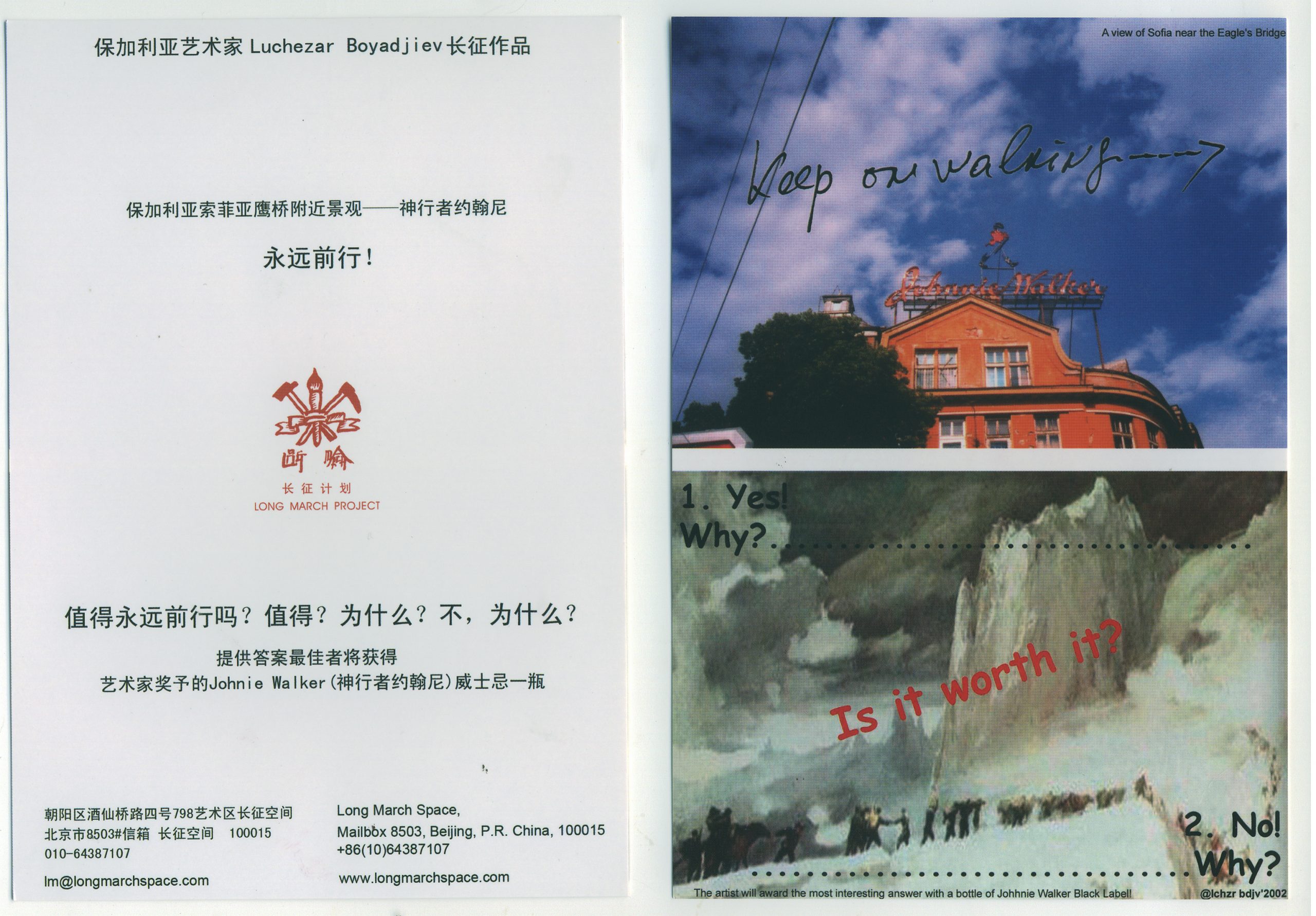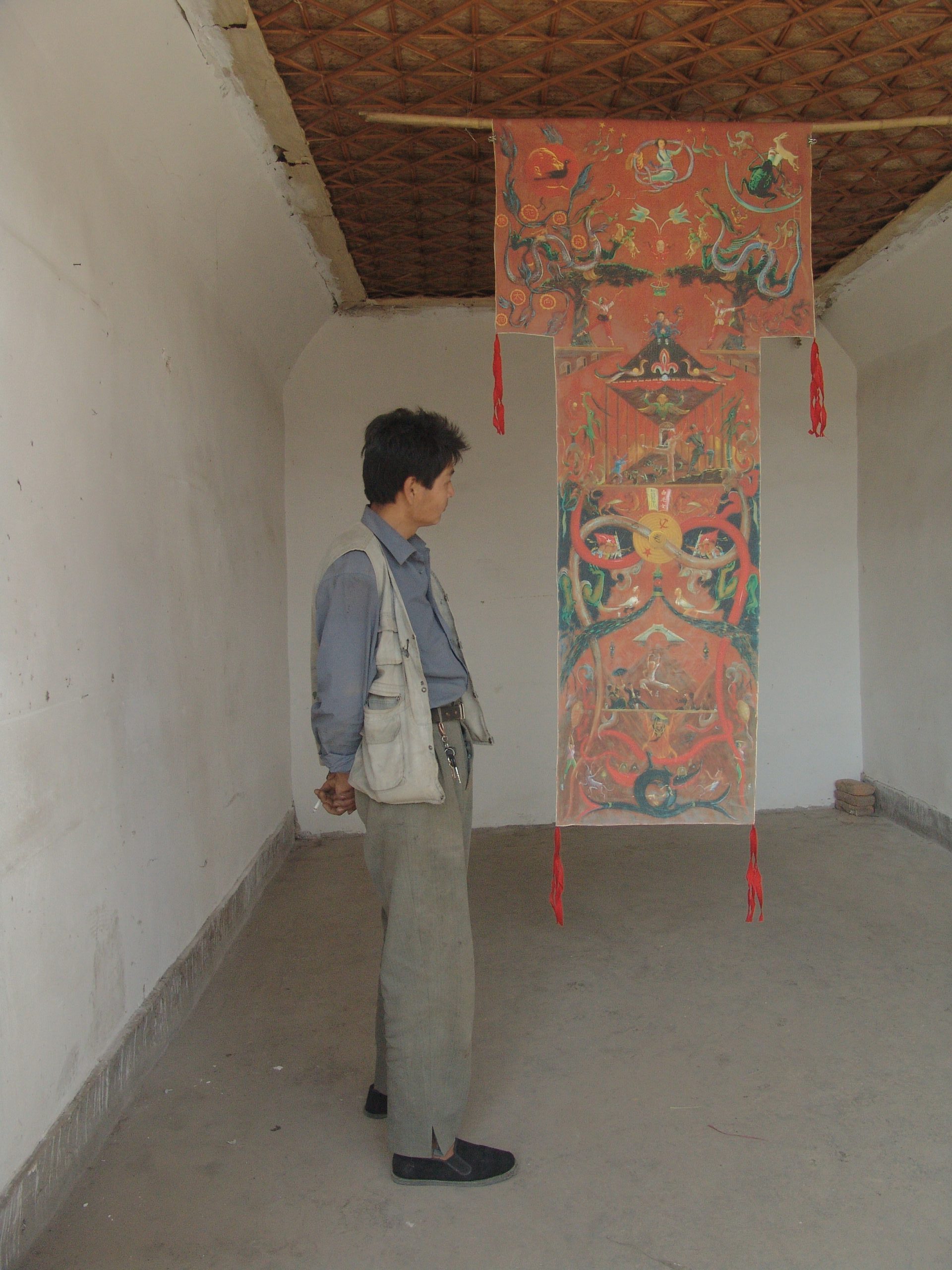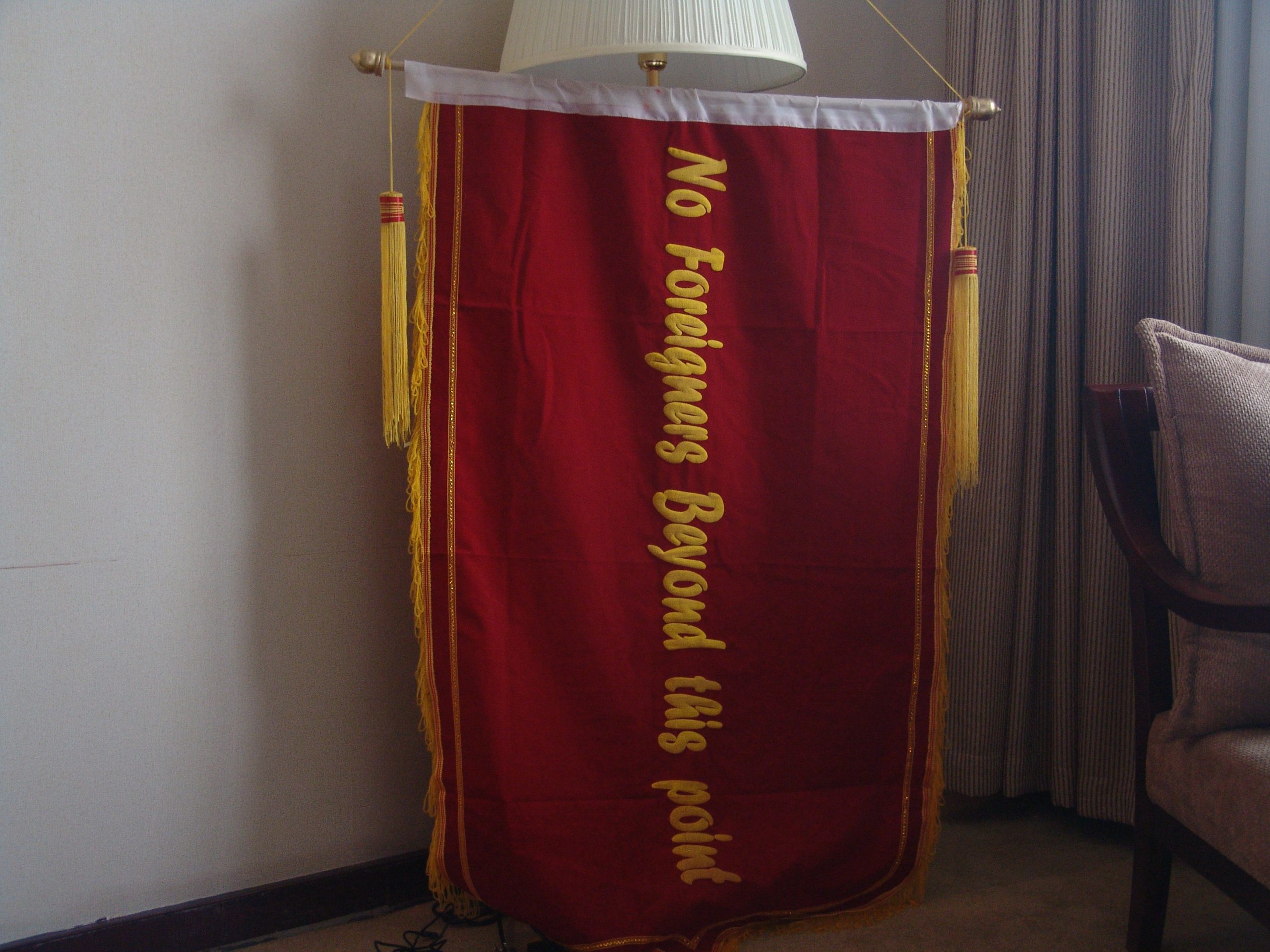Long March Project——Yan’an
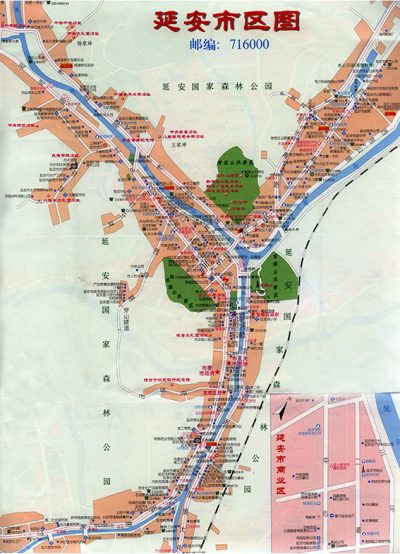
Site-visit Initiative
Yan'an
Time: May 20 – September 30, 2006
Location: Yan’an
Artists: Feng Mengbo, Liang Yue, Miu Xiaochun, Shi Jinsong, Yu Hong, Zhong Biao
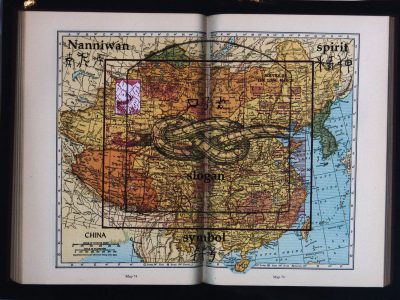
Exhibitions & Artworks Implemented in Yan’an
Yan'an
Time: May 2 – September 30, 2006
Location: Yan’an
Artists: Chen Shaofeng, Dong Jun and his team, Guo Fengyi, He Jinwei, Hong Hao, Jiang Jie, Li Fang, Li Yang, Li Yang, Liang Yue, Liu Dahong, Ma Wen, Mu Xiaochun, Qiu Zhijie, Shen Xiaomin, Shu Yong, Sui Jianguo, Wang Shugang, Wang Wei, Song Dong, Xiao Lu, Xiao Xiong, Yan Lei, Yu Hong, Yue Luping, Zhu Fadong, Dan Mills, Dmitry Gutov, Luchezar Bodeyvich, Trinh T. Minh-ha and Ulrike Ottinger
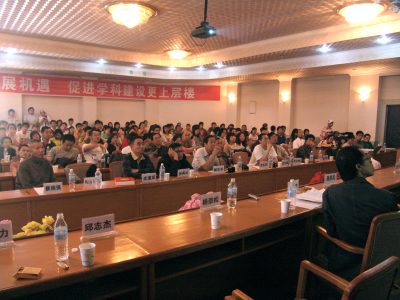
Yan’an Art Education Forum
Yan'an
Time: May 21-23, 2006
Location: Kang-da Hotel, Yan’an University, Yan’an
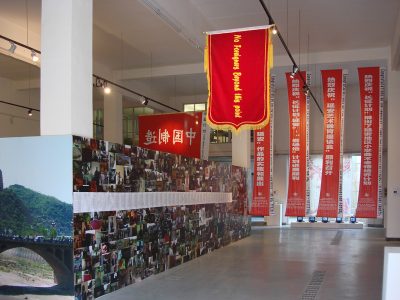
“Long March Project: Yan’an”, A Reportage Display, Beijing
Yan'an
Time: February 3 – March 25, 2007
Location: Long March Space, Beijing
Artists: Chen Shaofeng, Dong Jun and group, Guo Fengyi, He Jinwei, Hong Hao, Jiang Jie, Li Fang, Li Yang, Liang Yue, Liu Dahong, Jennifer Wen Ma, Miao Xiaochun, Qiu Zhijie, Shen Xiaomin, Shu Yong, Sui Jianguo, Wang Shugang, Wang Wei, Song Dong, Xiao Lu, Xiao Xiong, Yan Lei, Yu Hong, Yue Luping, Zhu Fadong, Dan Mills, Dmitry Gutov, Luchezar Bodeyvich, Trinh T. Minh-ha, Ulrike Ottinger
Exhibitions & Artworks Implemented in Yan’an
Yan'an
Time: May 2 – September 30, 2006
Location: Yan’an
Artists: Chen Shaofeng, Dong Jun and his team, Guo Fengyi, He Jinwei, Hong Hao, Jiang Jie, Li Fang, Li Yang, Li Yang, Liang Yue, Liu Dahong, Ma Wen, Mu Xiaochun, Qiu Zhijie, Shen Xiaomin, Shu Yong, Sui Jianguo, Wang Shugang, Wang Wei, Song Dong, Xiao Lu, Xiao Xiong, Yan Lei, Yu Hong, Yue Luping, Zhu Fadong, Dan Mills, Dmitry Gutov, Luchezar Bodeyvich, Trinh T. Minh-ha and Ulrike Ottinger
Cave Dwellings at the Historical Site of Yan’An University
In July of 1941, the Central Party decided to combine the Mao Zedong Young Cadre School (established May 1940), the College of Chinese Women (established July 1939), and the Sha’anbei Public University (established October 1937) to form Yan’an University.
The university was divided into the School of Social Sciences, School of Law, School of Education, Russian Department, English Department, Physical Education Department, and Middle School Department. Over eight hundred students were enrolled in the university. The university is located in Wangjiaping, on the site of former Women’s College. It is the first Red (Communist Party) university in China.
The two hundred cave dwellings remaining today were once student dormitories and classrooms. Ten of these cave dwellings from Block 5 were converted into a Long March Yan’an Project exhibition space for contemporary art.
Shortly after the project, the cave dwellings will be renovated and recognized as an historical site, turning this base of education and patriotism into another tourist destination.
Dong Jun
Dong Jun, Art For the People, video work screening
Curator: Dong Jun
Artists: Li Junhu, Yue Luping, Lin Xin, Dong Jun, Zu Weimin, Quan Hongyi, Zhou Yu, Min Tao, Liu Jia, Su Sheng Xu Li, Zhang Linzi
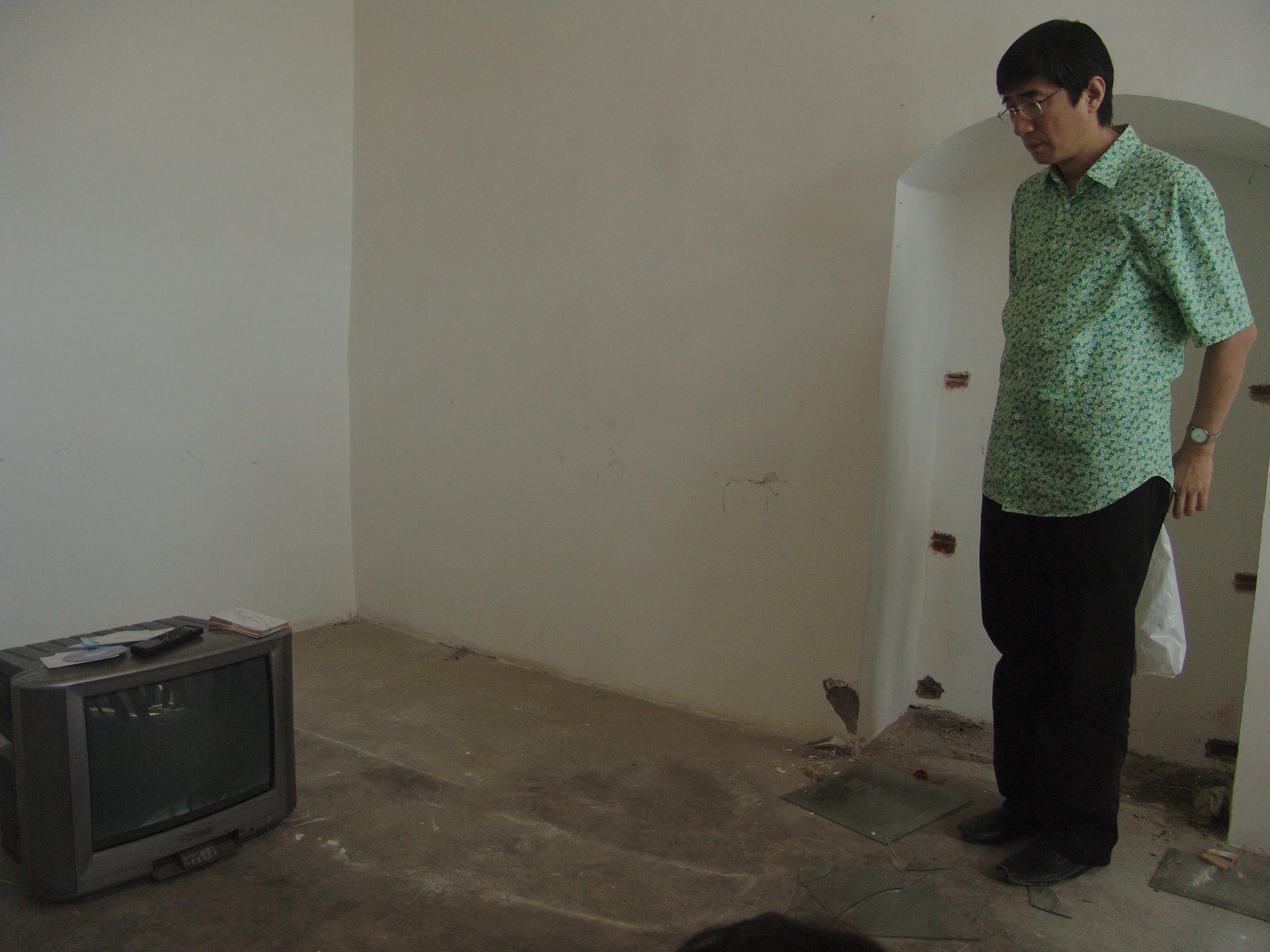
On the occasion of the 64 anniversary of the Yan’an Forum on Arts and Literature, leading artists from Xi’an will show major independent film works from a six year period between 2001 to 2006. The films document how young people born in the 70’s and 80’s understand their lives, through the use of those elements of Yellow River culture they are most familiar and which have left the deepest impression. Within this entanglement of history and traditional culture, a view of the state of this new generation is presented through the examination and unfolding of contradictions and conflicts between society and community, collective idealism and individual. The works were shown in a series of cave dwellings at the former site of the Yan’an University, presenting the unique understanding and creation in the Xi’an art scene.
Li Fang
Li Fang
25000 V.S. 25000
Performance, installation
Chengdu, Sichuan to Yan’an University Cave Dwellings
2006.5.18 – 22
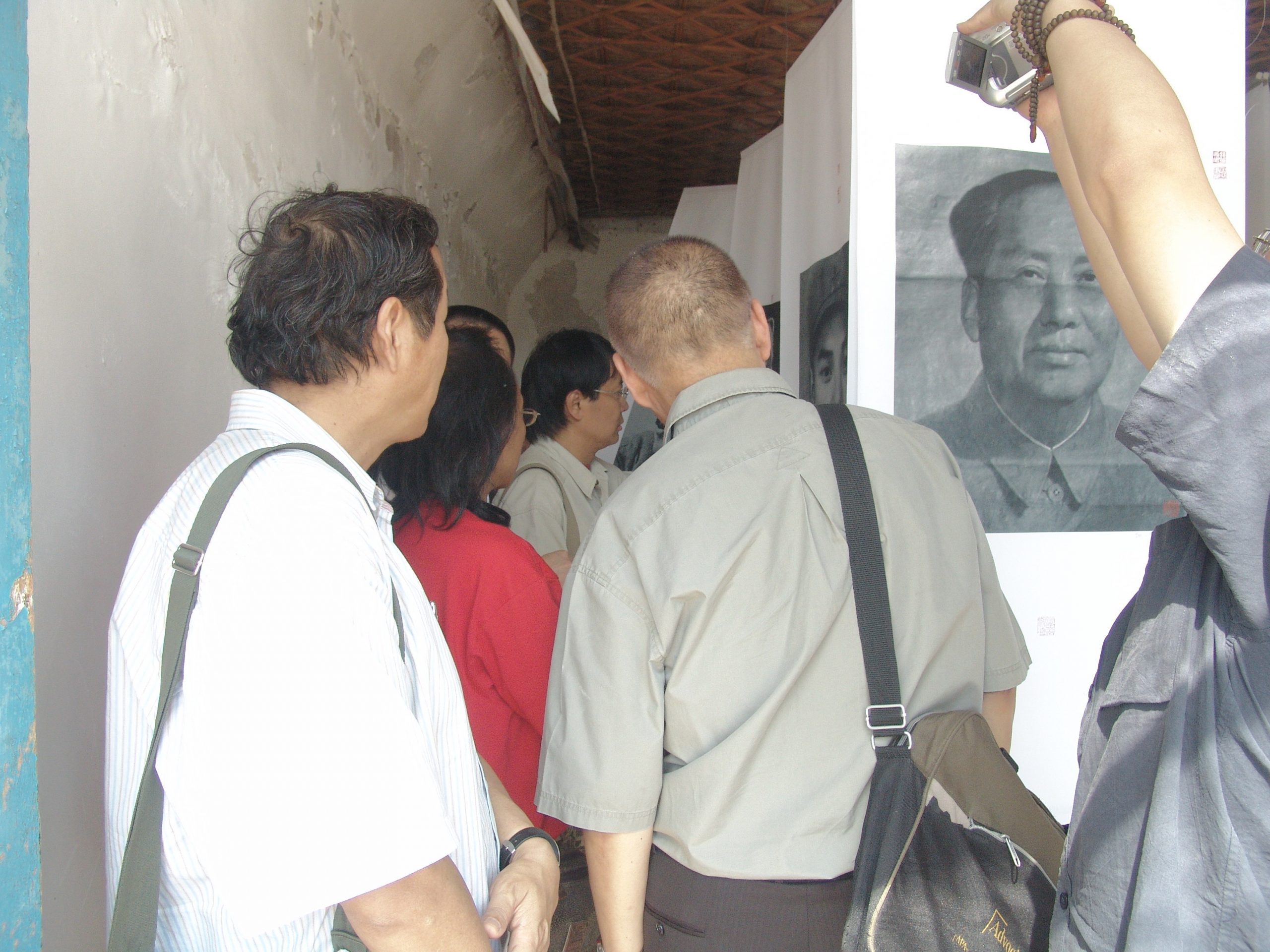
The artist created printed images of portraits from participants of the historical Long March, as well as the “new” Long March, altering their effect and mounting them on traditional Chinese scrolls. Then, the artist and his assistants drove from Chengdu to Yan’an, displaying the works at different sites along the way, discussing with the local people about the historical Long March and the current Long March. The artist will continue his work as the Long March continues to add new participants.
Through a compression of narrative, the work merged the historical and new Long Marchers together into one visual diagram. Through the process of identifying familiar portraits and unknown ones, the audience dissolves the mythical elements of the grand narrative, inspiring a new reading of history and present by suturing two different periods of history together. The work drifts away from textual archive into oral narrative based on memory, creating spaces for more reading. It is this enthusiastic reading provides history with a wider social meaning.
Liu Dahong
Liu Dahong
White Haired Girl (Boa Constrictor)
Oil on canvas, installation
Yan’an University Cave Dwellings
2002-2006.5
Liu Dahong, “White Haired Girl – (Boa Constrictor), oil on canvas/installation, 2002
Originally created for the Long March – A Walking Visual Display in 2002, the work was exhibited in a cave dwelling at the site of the former Yan’an University. The work is based on the modern ballet style opera, “Red Female Army” and the fable “Shan Hai Jing”, presenting an imagined and fabulous world of legend.
Part of the work was to distribute the comic book to the representatives taking part in the “Yan’an Forum on Arts Education.”
Sui Jianguo
Sui Jiangguo
Untitled
Installation
Yan’an University Cave Dwellings
2006.5
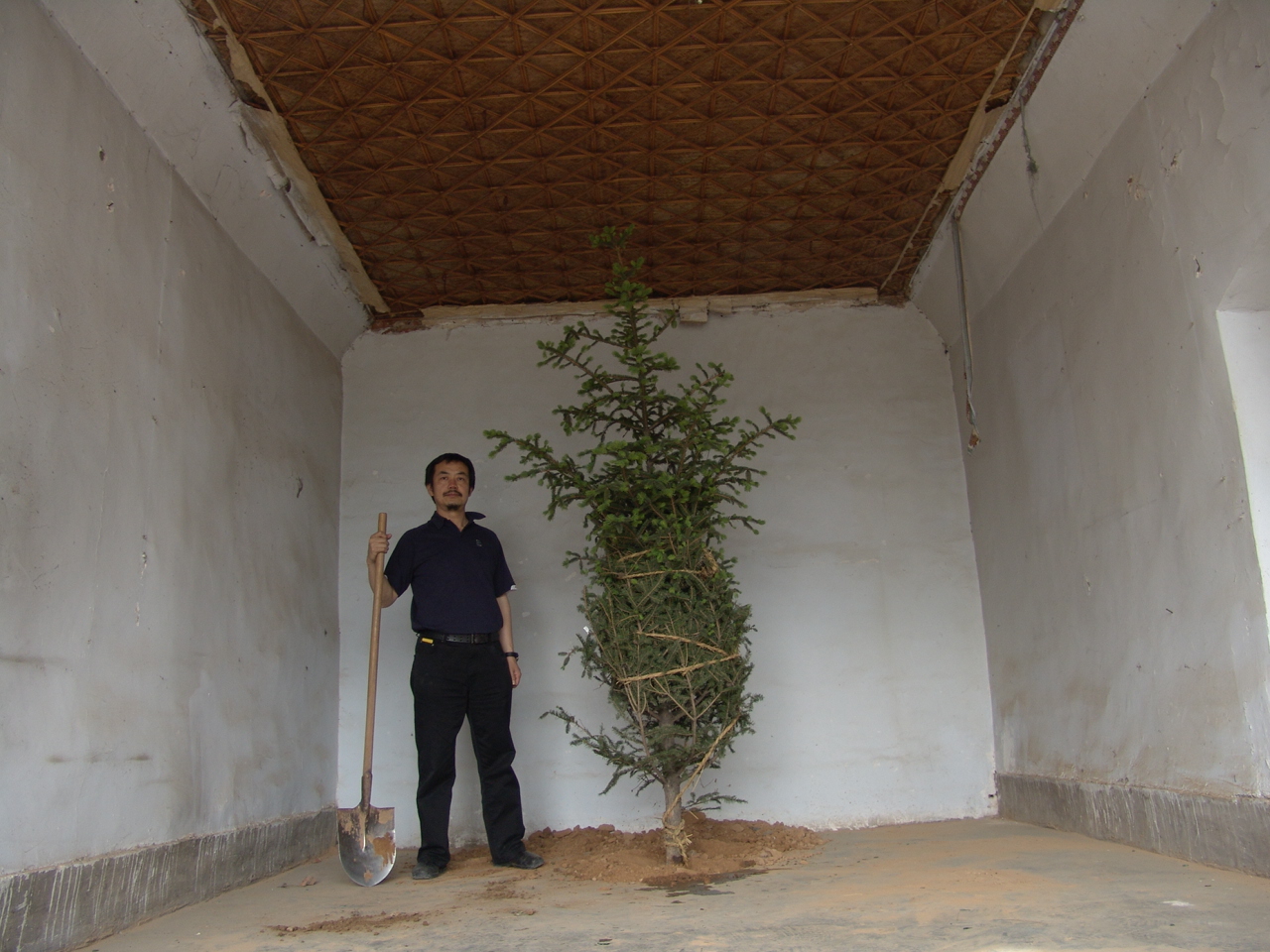 Sui Jianguo, “Untitled”, Installation, 2006
Sui Jianguo, “Untitled”, Installation, 2006
Within the 6th cave dwelling of the 5th row at the historical Yan’an University site is a hole, whose purpose, creator, or date of creation is unknown. Within this hole, Sui Jianguo planted a coniferous tree, and asked local residents to maintain and water the tree until it was cut down or replanted when the cave dwelling was renovated one day in the future.
As a participant in the “Yan’an Forum on Arts Education,” Sui Jianguo used this work to engage with the discussion of art education by borrowing upon the Chinese proverb, “It takes 10 Years to Cultivate a Tree and 100 Years to Cultivate an Excellent Person”, revisiting the history of Yan’an University. Through a displacement of the relationship between “inside” and “outside”, the work examined the mutually inflecting negotiation between history, geography, and human volition.
Wang Shugang
Wang Shugang
Continuing the Revolution Another 8 Li
Performance, installation
Yan’an Baotra Mountain to Yan’an University Cave Dwellings
2006.5.21
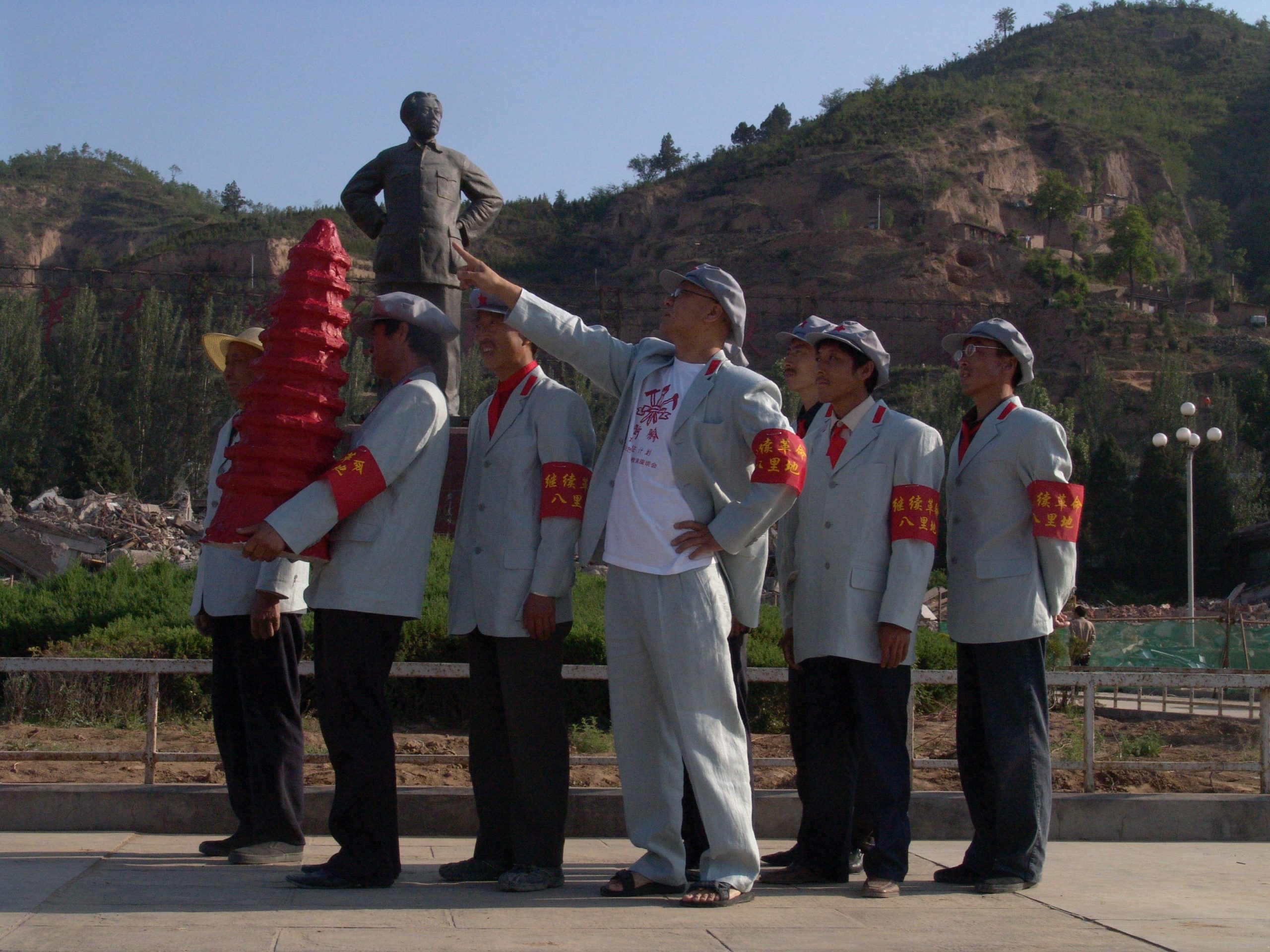 Wang Shugang, “Continuing the Revolution Another 8 Li”, performance/installation, 2006
Wang Shugang, “Continuing the Revolution Another 8 Li”, performance/installation, 2006
For this project, Wang Shugang produced a miniature papier-mâché Baota Pagoda, and with his entourage of local people dressed in Red Army uniforms in tow, proceeded to march from Baota Mountain, to the cave dwellings exhibition site at Yan’an University.
During the course of the march, the artist explained Chinese and international art history, as well as the new cultural and art history of Yan’an. Through this passage across these revolutionary sites in Yan’an, the group learned of the meaning behind the theory of “art serving the people.” Upon reaching the exhibition site at the historical site of the former Yan’an University, the Baota Pagoda was displayed as an installation within a cave dwelling, along with crumpled pages from an art history book from the revolutionary period.
Through the combination of revolutionary history and art history of China, the work interpreted the will and spiritual resources that support China’s ongoing new Long March.
Xiao Xiong
Xiao Xiong
That Tiger
Video, installation, performance
Yangjiawan Village, Yan’an Baota District
2006.5.21
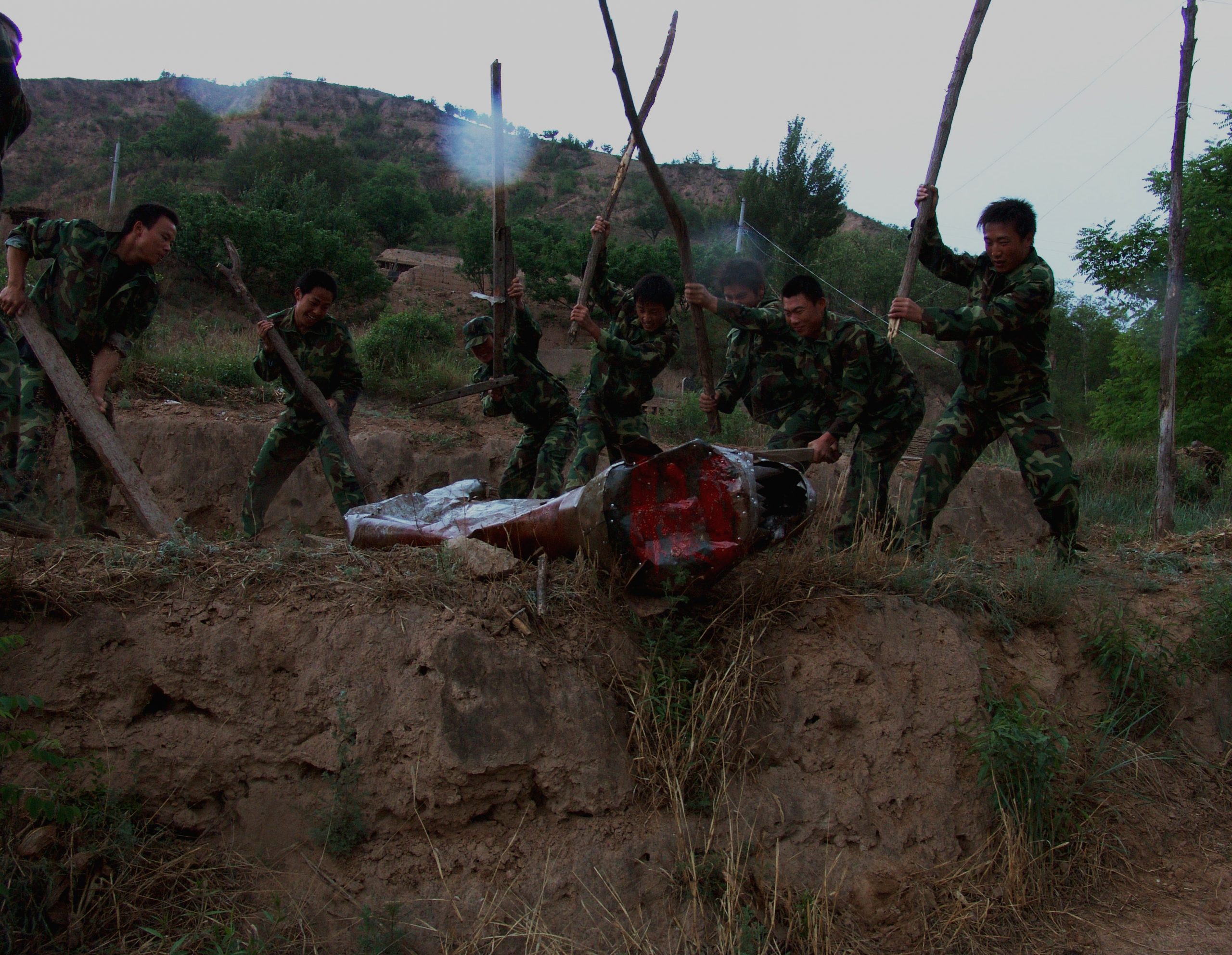 Xiao Xiong, “That Tiger”, installation/performance/video, 2006
Xiao Xiong, “That Tiger”, installation/performance/video, 2006
In a famous article regarding imperialism, Mao Zedong examined whether imperialist powers were real tigers, iron tigers, or paper tigers. On May 21, 2006, artist Xiao Xiong installed a sheet-metal iron tiger which he had produced in a historical battle field near Yan’an. Military cadets from Yan’an University then smashed the tiger.
Through this action, the work drew upon the image of a historical war scene, to correspond with the current reality today, using the methods of re-presentation and montage to directly enter into discussion. Through the parable and game of “bitterly beating the tiger”, the work cut at the hegemony of current geopolitical landscape, at the same time it sought to verify the historical narrative.
Kangda Hotel
In June of 1936, what was originally the Northwest Red Army University was expanded into the Chinese People’s Anti-Japanese Red Military University. In January of 1937, the university was renamed the Chinese People’s Anti-Japanese Military and Politics University (Kangda for short) and moved to Erdao Street in Yan’an following the relocation of the Chinese Communist Party central committee from Wayaobao to Yan’an.
Mao Zedong was named Chairman of the educational committee and Lin Biao was appointed Dean of the university. During the course of the eight-year anti-Japanese War, “Kangda” cultivated andtrainedmore than twohundred thousand cadres,becoming a model for revolutionary colleges during that period.
The hotel now belongs to the supervision committee of Yan’an Revolutionary Memorial Museum. The Long March Yan’an Forum on Arts Education was held on the 6th floor of the Kangda Hotel. Artists works were also shown throughout the public spaces and meeting halls in the hotel.
Hong Hao
Red Reproduction
Performance, installation
Yan’an Revolutionary sites, Yan’an Kangda Hotel Roon 6410
2006.5 – 2006.8
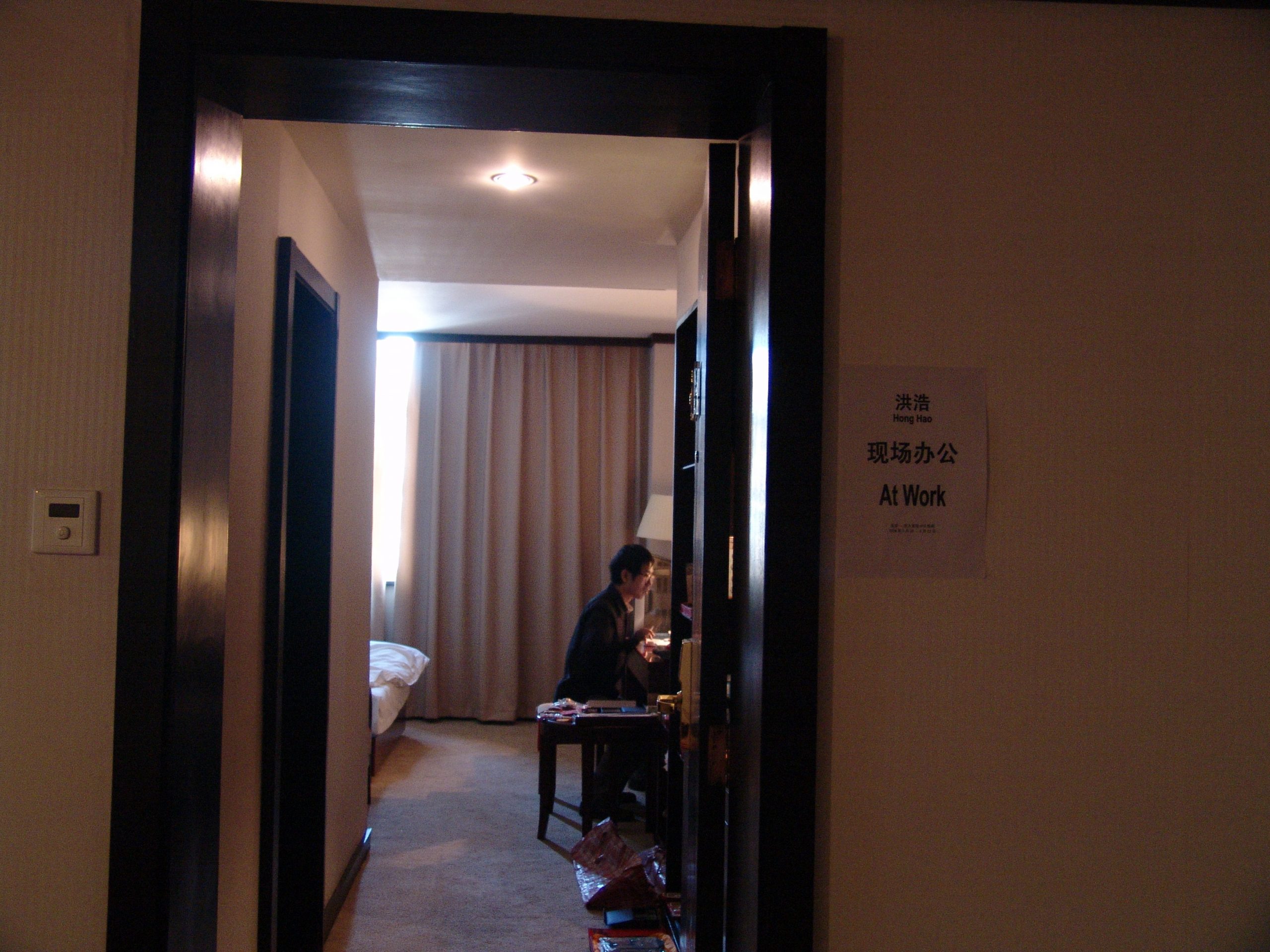
The artist traveled with the Long March team to Yan’an, searching for the connection and linkages between historical memory and tourism by collecting different memorabilia and souvenirs from the various historical sites throughout Yan’an. In room 6410 of the “Kangda Hotel” (Anti-Japanese Military University Hotel) in Yan’an – a site which combines both history and tourism – Hong Hao would work everyday classifying and organizing these items, as well as scanning their images and combining them into a photographic collage.
If Hong Hao’s Long March work, “Long March in Panjiayuan”, is a form of vicariously participating in the Long March (Panjiayuan is in Beijing), using an analysis of images to reassemble revolutionary texts together, what it brings forth is the visual memory of the artist and connection to the period when he was growing up. It is a voice coming from the overlap of historical socialist memory and memory from his youth. In 2006, the artist has returned to traveling, from experience, gathering visual materials onsite to create
A new visual medallion. the a society of economy of commercial products the reality and the historical narrative extension created.
Likewise, at the same time as this new visual medallion is produced, it is also takes “present” tense of history and moves it to a period in time in the past.
Guo Fengyi
Fengshui of Yan’an
Coloured ink on ricepaper
Yan’an Kangda Hotel
2006.5.20-23
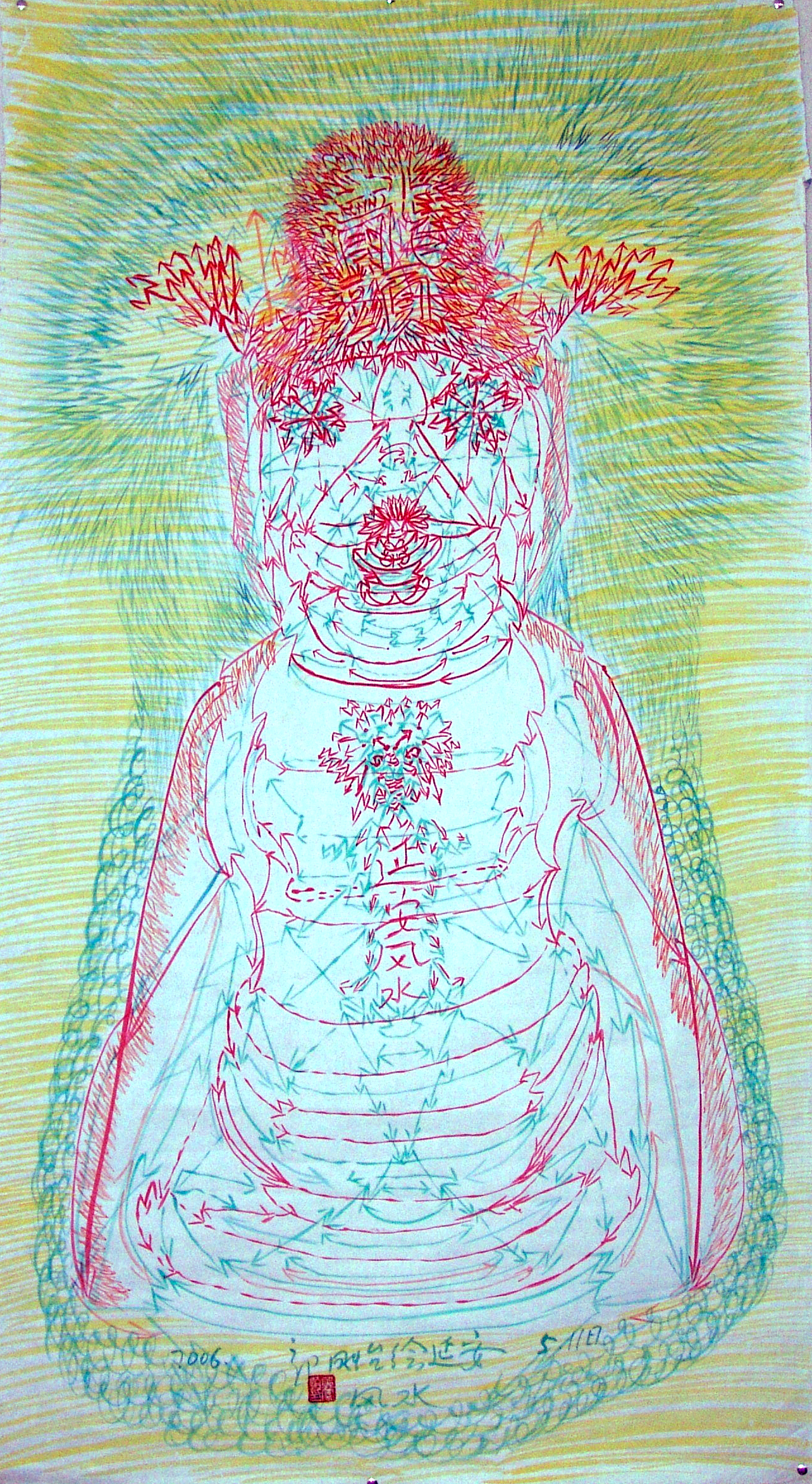 Guo Fengyi, “Fengshui of Yan’an”, drawing
Guo Fengyi, “Fengshui of Yan’an”, drawing
Directly across from the famous Baota Mountain in Yan’an is Qingliang Mountain, which houses an equally famous Daoist temple. Based upon her extensive research of the I-Ching (Book of Changes) and Daosim, artist Guo Fengyi uses her unique method of drawing to provide a geographic depiction of this region. From the changes and survey of her drawing style, one is able to see one individual’s self interpretation and understanding of a larger historical background. The artist feels that the Fengshui of this region possess an important new beginning.
Li Yang
Myth of Academic Giant
Woodblock prints
Central academy of Art (Beijing) to Yan’an Kangda Hotel March – May
2006.3-5
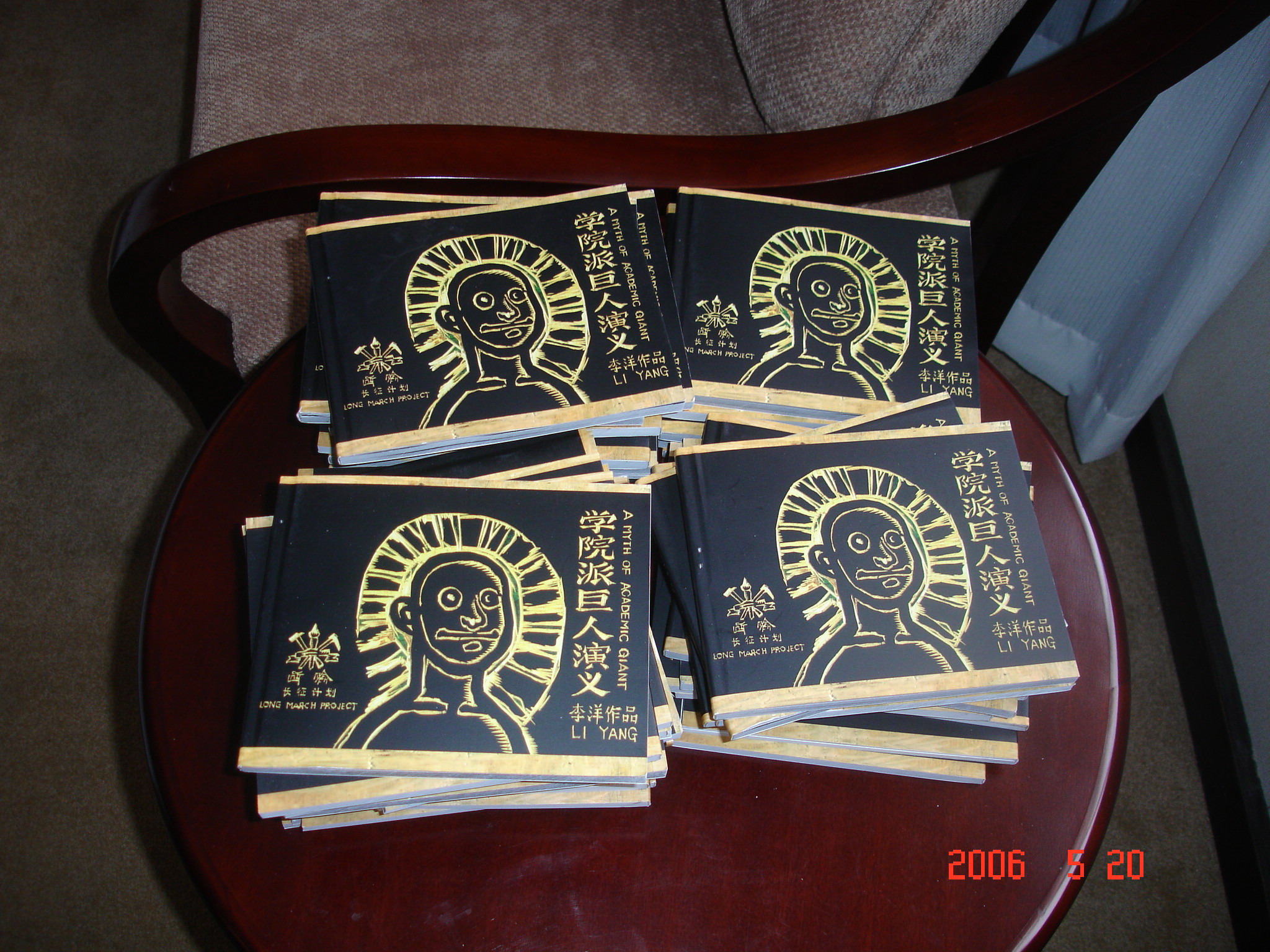 Li Yang, “Myth of Academic Giant”, book; 2006
Li Yang, “Myth of Academic Giant”, book; 2006
The artist compiled a picture-story book based on his personal experiences during his period as a student at the art academy. The work combines poetry and confessional forms. The light prose softens the criticism of the manic emotions of youth. Confession is more to the core of the work, using a fragmentary method of recording events, as in a diary, to give expression and interpret the many issues confronting contemporary art education, and the feelings of despair that they give rise to.
Part of the work was to distribute the comic book to the representatives taking part in the “Yan’an Forum on Arts Education.”
Liu Dahong
Liu Dahong
Iron Ricebowl
Oil on canvas, installation
Kangda Hotel
2006.5
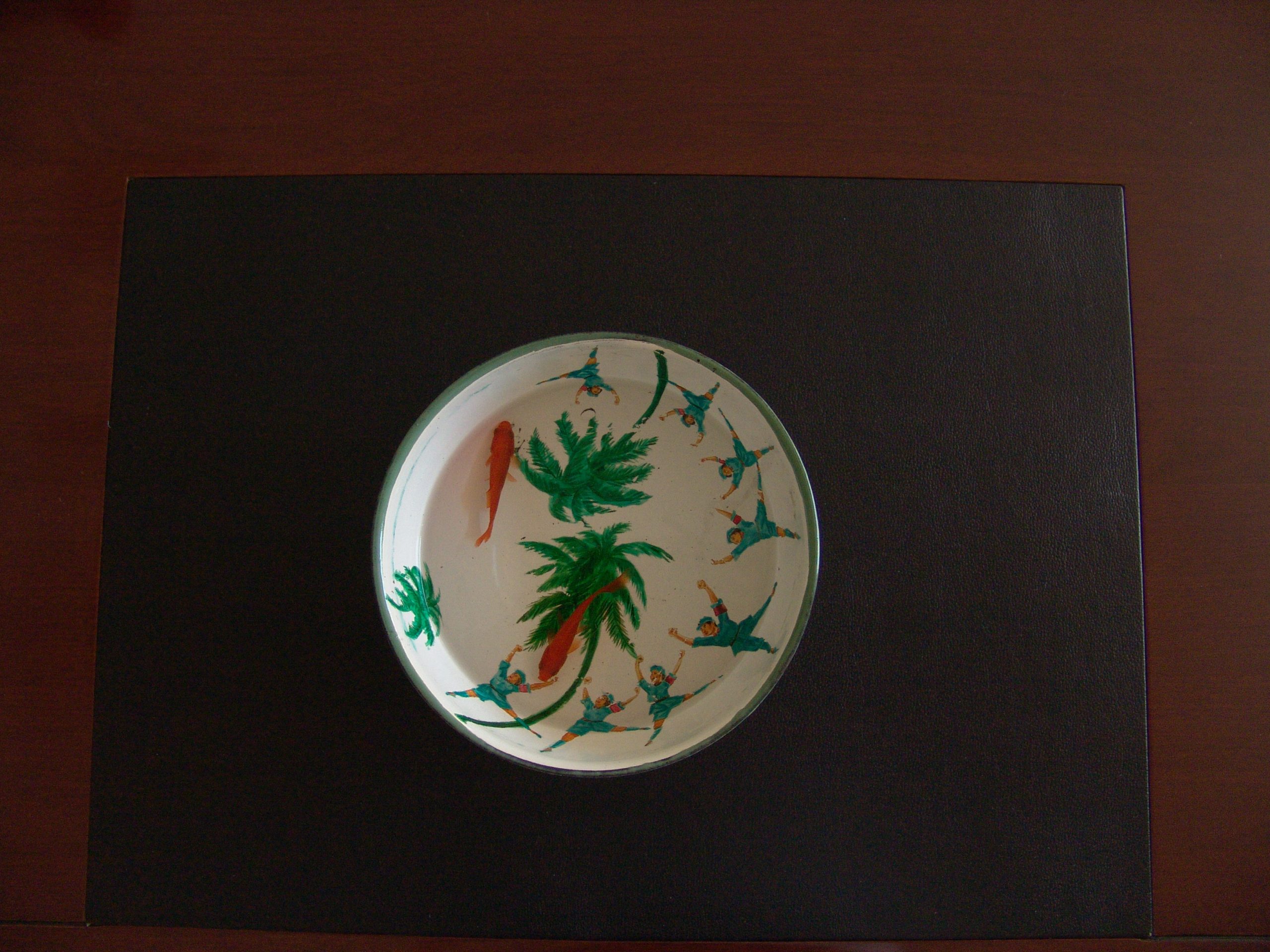 Liu Dahong, “Iron Ricebowl”, installation/painting, 2005
Liu Dahong, “Iron Ricebowl”, installation/painting, 2005
The Shanghai artist Liu Dahong’s installation work was exhibited in the lobby of the Kangda hotel in Yan’an. The iron/porcelain bowl is ubiquitous object in the household of every Chinese family. Within the bowl, Liu Dahong painted a group of images from “Red Female Army”, a modern ballet style opera popular during the Cultural Revolution. At bowl was filled with water, and two small goldfish were placed in the bowl. The work visually recalled the collective memory of the past generation.
Ma Wen
Operation Change Word – Yan’an
Performance and installation
Throughout city of Yan’an
2006.5
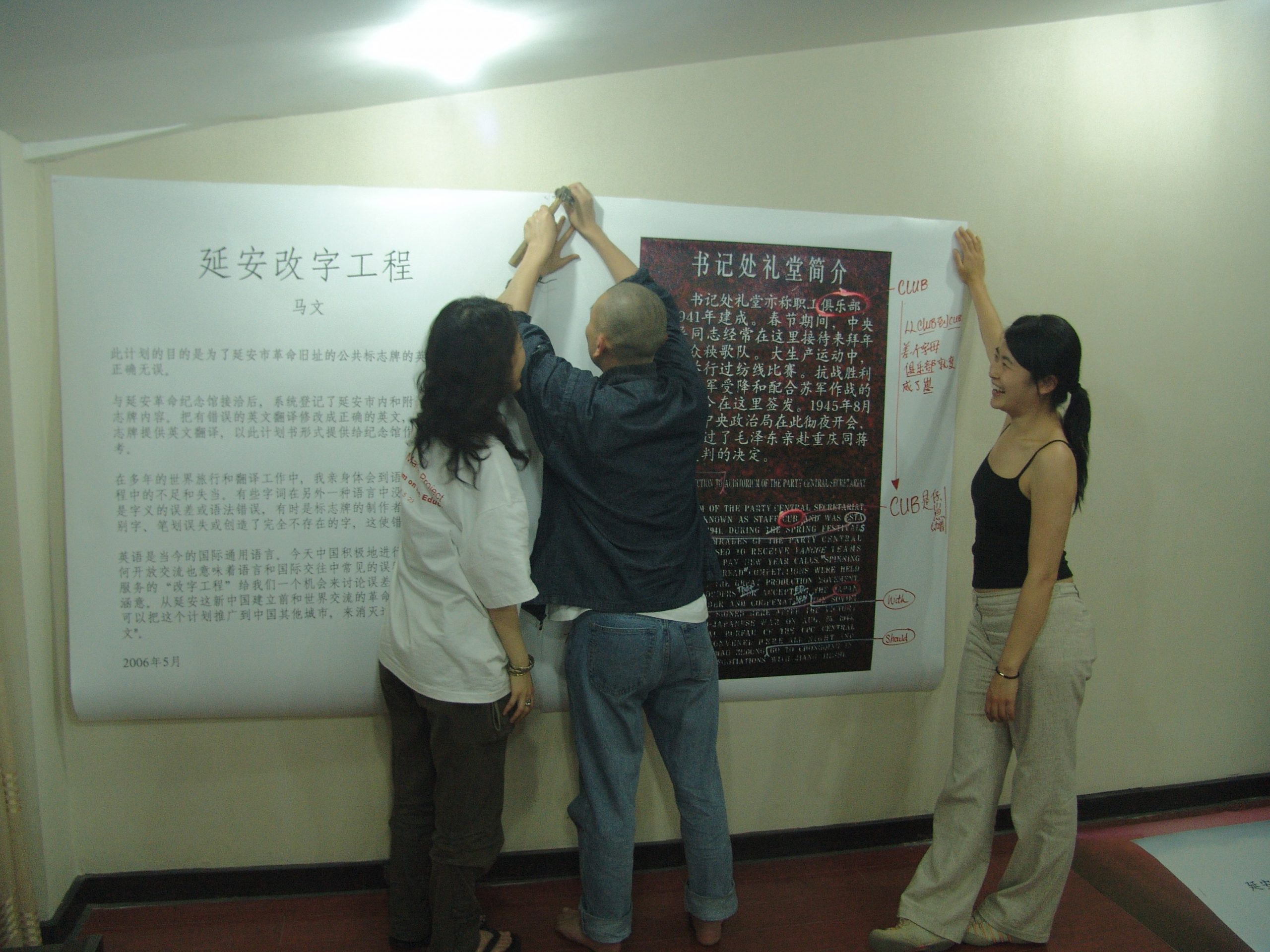 Ma Wen, “Operation Change Word – Yan’an”, performance, 2006
Ma Wen, “Operation Change Word – Yan’an”, performance, 2006
The goal of the project is to ensure public signs in the City of Yan’an have appropriate English translations.
First, an encyclopedic record of public governmental signs (in Chinese) identifying historical sites are collected, each provided with new English translations, either to replace incorrect English, or to create new ones. A hierarchal design system for the signs will also be presented in the proposal. The proposal booklet will be submitted to Yan’an local authorities for implementation consideration. A selection of prominent signs from private businesses in the city will also be featured in the book with their poor English corrected.
For the opening of the “Long March – Yan’an Project”, a number of signs that bears bad English translations are replaced by the corrected texts with the permissions from the proper authorities. Video and photographs document the process. Old signs, documentary video, photographs and the proposal booklet are exhibited in an installation. A signage system will also be designed and implemented for the Yan’an Forum on Art Education.
In over six years of traveling around the world working extensively in the translation process, the artist has witnessed and experienced first hand the inadequacies and insufficiencies of translating words into another language. Some words or phrases simply do not have an equivalent in another language. The meaning of the original text can be misunderstood, the syntax may be wrong. There are misspellings, typos, or nonsensical words resulting from the final text-preparer’s lack of knowledge of the language, which make the mistakes even more glaring, bizarre and laughable.
English has become the unofficial language of our global community. And China is eagerly at the forefront of international encounters and exchanges. Yet any opening and widening of communication also open doors to the misinterpretation and misunderstanding inherent in communication and language. This project, meant as a form of community service, gives us an opportunity to discuss this margin of error and its implications, especially in the city of Yan’an. It was here, nearly 70 years ago, where New China’s political structure was first set up and diplomatic relations were established with the world. And perhaps starting with Yan’an, a city of new beginnings, we can work our way through other Chinese cities, in an attempt to put an end to this “Chinglish” that is universally mocked.
Shen Xiaomin
Shen Xiaomin
Eulogy of the Longjiang River
Video
Yan’an Kangda hotel lobby
2002-2006.5
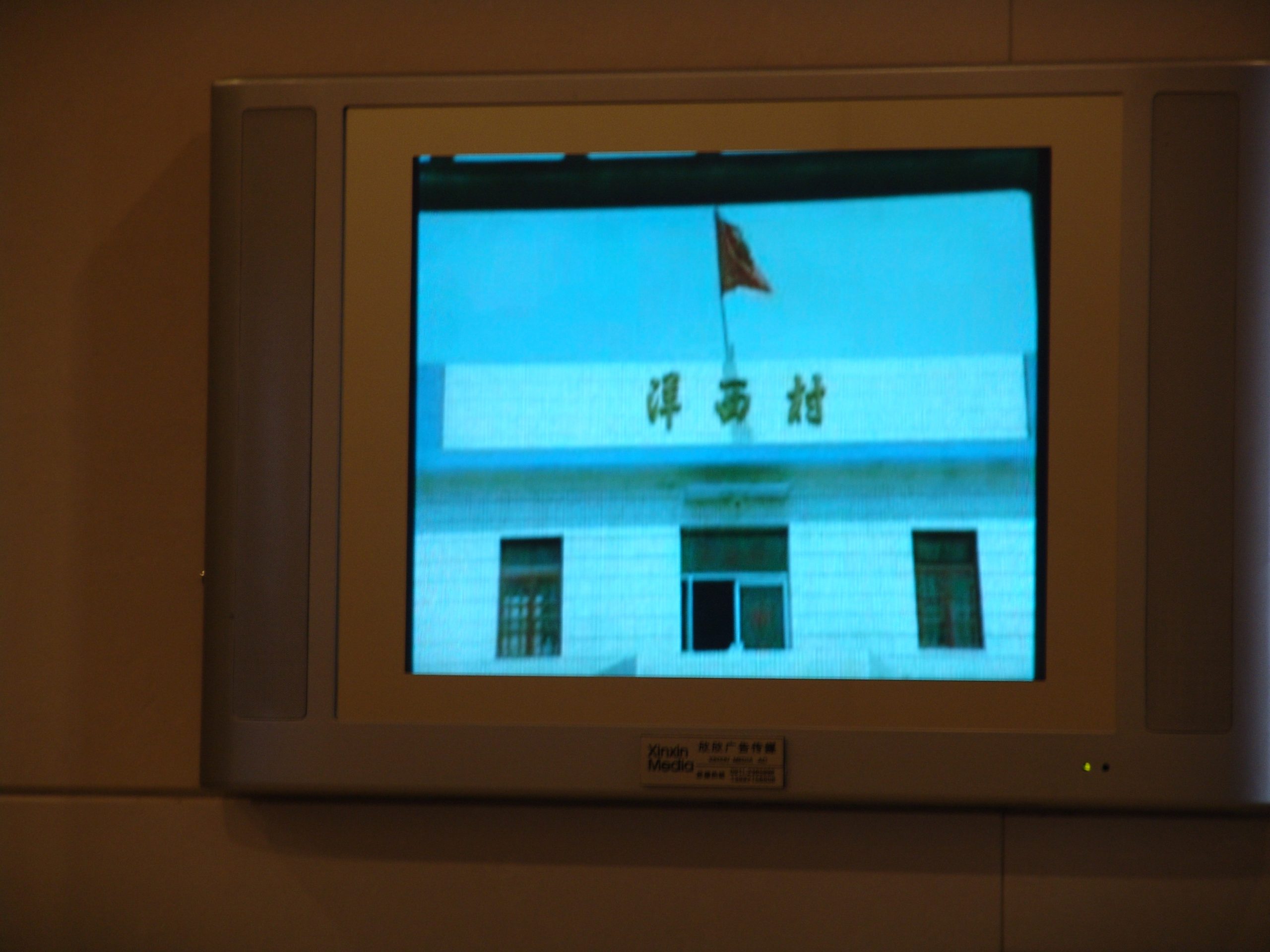
The work is a documentary film.
As one of the eight “model plays” from the period of the Cultural Revolution, the “Eulogy of the Longjiang River” has had a strong impact on the artist’s generation. “Model plays” were based upon the archetype of a distinct and clear conflict between protagonist and antagonist. The story of “The Eulogy of the Dragon River” took place in the artist’s hometown. The artist found the two persons who the original “model play” was based upon, who were made into a parable of conflict between good and bad through documentation, and reexamination of history. But it turns out the reality was different from the narrative the play espoused.
This work was displayed on the pubic video set in the elevator’s entrance of Yan’an Kang da hotel. Although people may not stay long at the entrance to watch the entire documentary, only to catch parts of it in passing, the display unfolded the meaning and the questioning of a constructed narrative implicitly accepted behind the work.
Sui Jianguo
Sui Jianguo
Made in China
Embroidered cloth flag
Installation
Yan’an Kangda Hotel Meeting Room
2006.5
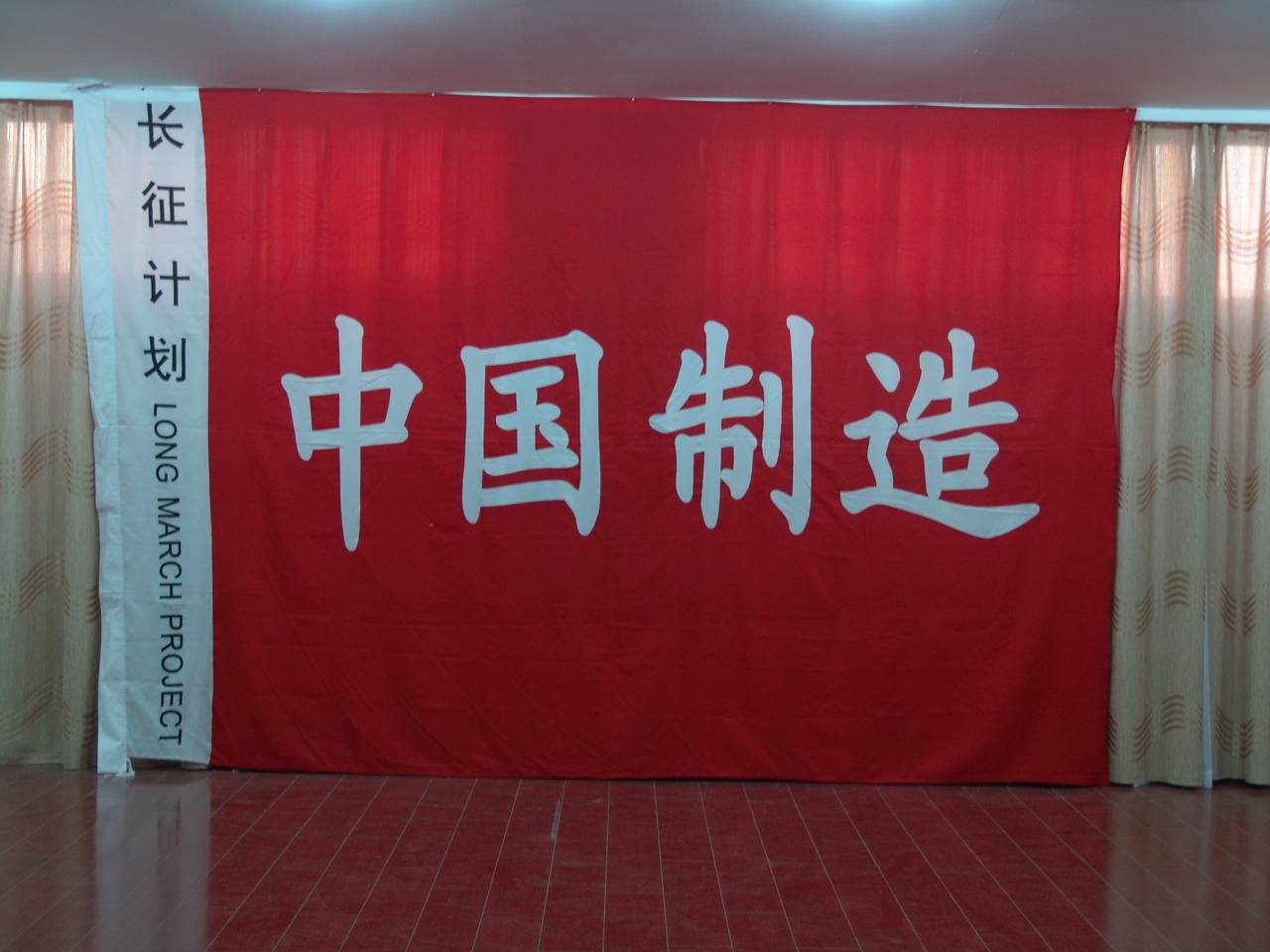 Sui Jiangguo, “Made in China”, installation, 2006
Sui Jiangguo, “Made in China”, installation, 2006
The artist created a Long March flag with the four Chinese characters “zhong guo zhi zao” (made in China) embroidered by hand. “Made in China” can often be seen on the labels of exported products, conveying a sense of national identity. With the development of Chinese economy and its rise in international status, a perception that China will threaten the world has continually been espoused in several Western countries. Through the extension of the slogan “Depend on Yourself and You Will Have Ample Clothes and Food” popular during the revolutionary period, the artist expresses his view on world politics and economy structure in the 21st Century from the perspective of an independent country and nation.
Long March is made in China,
Yan’an spirit is made in China,
.‘Made in China’ is even more made in China.
—Sui Jianguo
Xiao Lu
Xiao Lu
Sperm
Video, installation, performance
Yan’an Kangda Hotel
2006.5.21-23
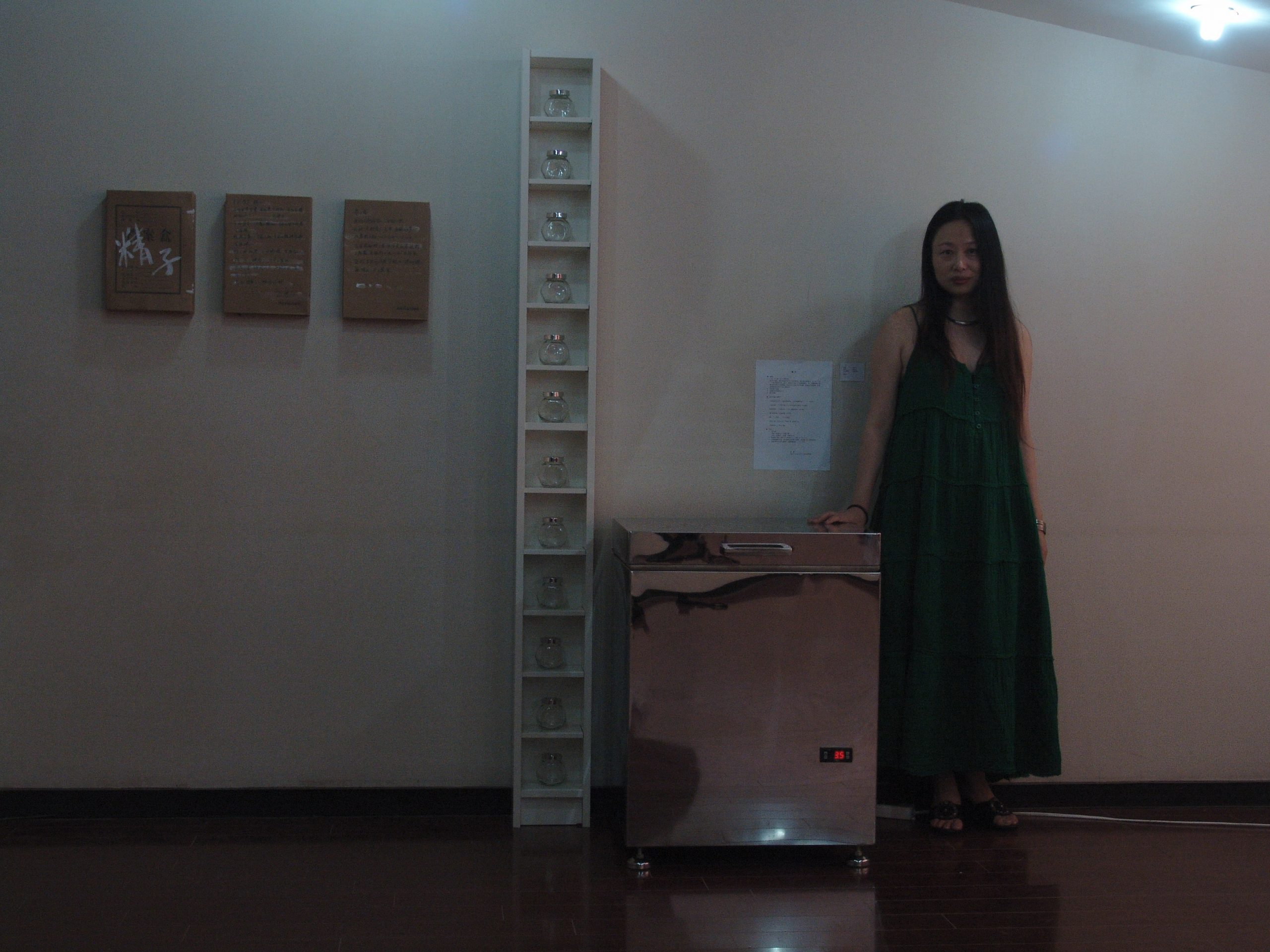 Xiao Lu, “Sperm”, installation/performance, 2006
Xiao Lu, “Sperm”, installation/performance, 2006
In the 6th floor’s small meeting room of the Kangda hotel, the artist presented an installation work composed of a special freezer made in Beijing, 12 glass bottles and file folders. According to the work’s explanation, the artist hoped to have someone donate sperm to her, helping her to realize the long-cherished wish of having a baby in what is her last year to successful undergo artificial insemination.
In conjunction with the work, the artist organized a discussion onsite regarding love, marriage, sex, ethics and social morality and justice. For Xiao Lu, human beings have many kinds of life needs that can be satisfied in many ways, and it is not possible to establish a single acceptable pattern. In a similar manner, art is the same as life – for if art is not a deeply innate need, then what relationship does it posses with its surrounding, and what is the practical meaning of its existence? Art that loses its connection to life and everyday existence risks metaphysical crisis.
As Xiao Lu states, “art is my sandbag”. It is only when two sides sincerely conflict is there a reaction, and only then is there art.
Yue Luping
Yue Luping
Watershed No.2
Book and archival materials
Yan’an Kangda Hotel 6th Floor Meeting Room
2006.5
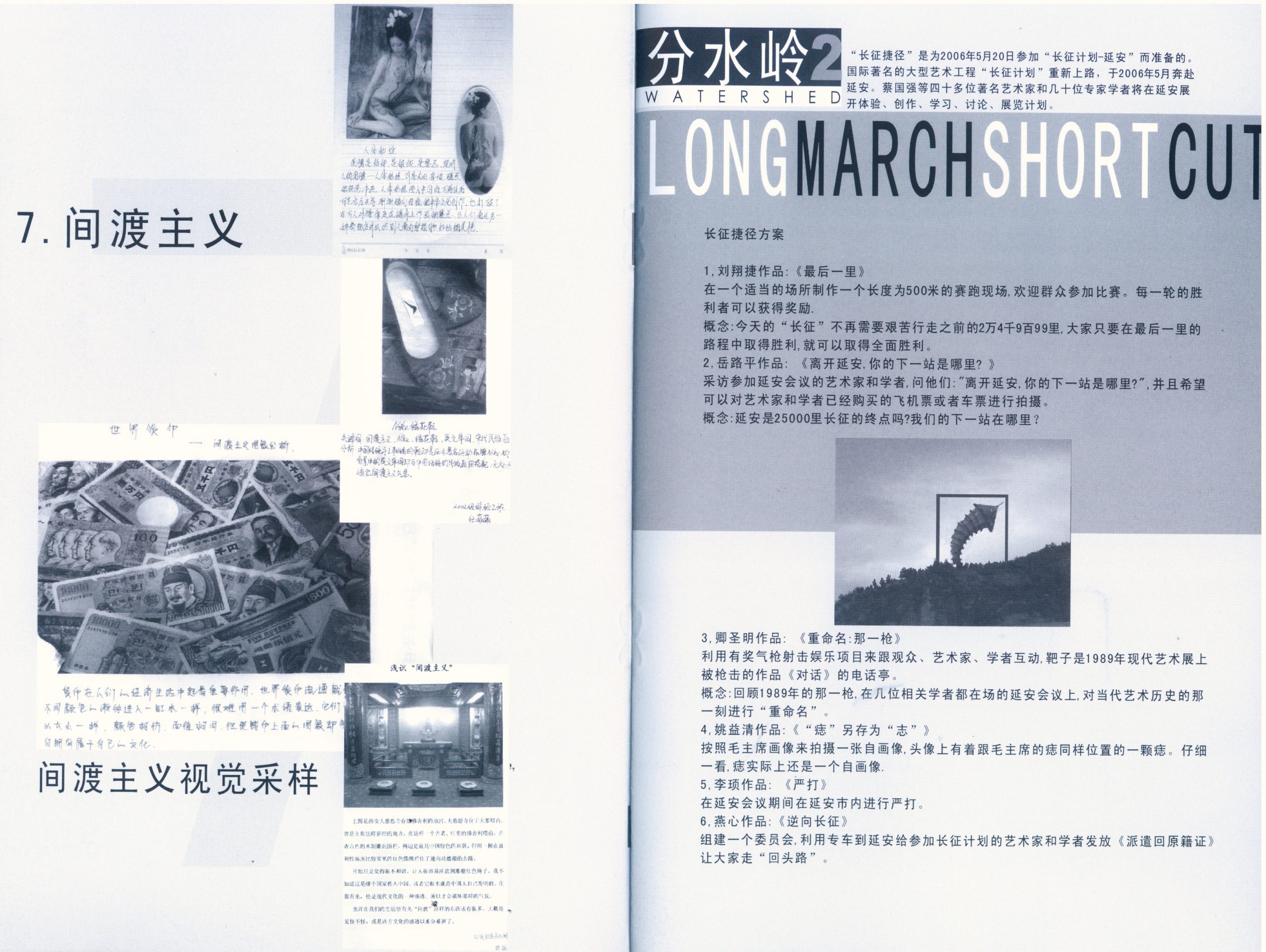 Yue Luping “Watershed NO2”, book and archival materials
Yue Luping “Watershed NO2”, book and archival materials
Yue Luping, the leading critic and thinker of contemporary art at the Xi’an Art Academy, joined the Long March Project from its beginning in 2002 by carrying out his project “Journey to the West”, and has continually contributed to Long March dialogue. His practice is archeological, examining the traces of ethnicity and migration to engage with the new Long March, as well as to give form to its many problems and contradictions.
For the “Long March – Yan’an Project”, Yue Luping has combined his ongoing “Journey to the West” project into a book, at the same time, bringing out his ideas of the contemporary art context in Xi’an. The book was distributed to representatives at the “Yan’an Forum on Arts Education.”
Zhu Fadong
Zhu Fadong
After You Comrade Zhu Fadong
Performance, photograph
Yan’an Kangda Hotel
2006.5
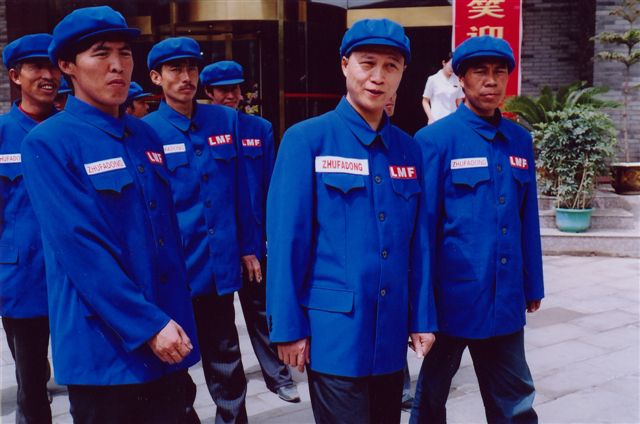 Zhu Fadong, “After You Comrade Fadong”, performance, 2006
Zhu Fadong, “After You Comrade Fadong”, performance, 2006
The work is a continuation of a series of works from Zhu Fadong in which he performs in a blue factory suit. For this project, the artist hired 12 local workers from Yan’an, and outfitted them with blue factory uniforms which the artist had tailor made. The group “stood guard” to the entrance of the “Yan’an Forum on Arts Education”, welcoming the representatives by hollering out “After You Comrade Fadong” in their Sha’anbei accents. Once all the representatives were in their seats, the 12 workers and Zhu Fadong filed in and sat in a row to attend the forum.
By “crashing” the forum, the artist raised the issue of identity. The phrase, “After You Comrade…”, originally came from the early Soviet movie “Lenin in 1918”. Its appropriation here seeks to identify the borders and spaces of salience in social classes by revisiting a historical context. At the same time, it serves as a caution to the increasingly elitist nature of artists in their production.
Central Academy of Fine Arts
The Experimental Art Department of the Central Academy of Fine Arts
Survey on Chinese Public’ Aesthetic Taste
Archival Book
2006.5
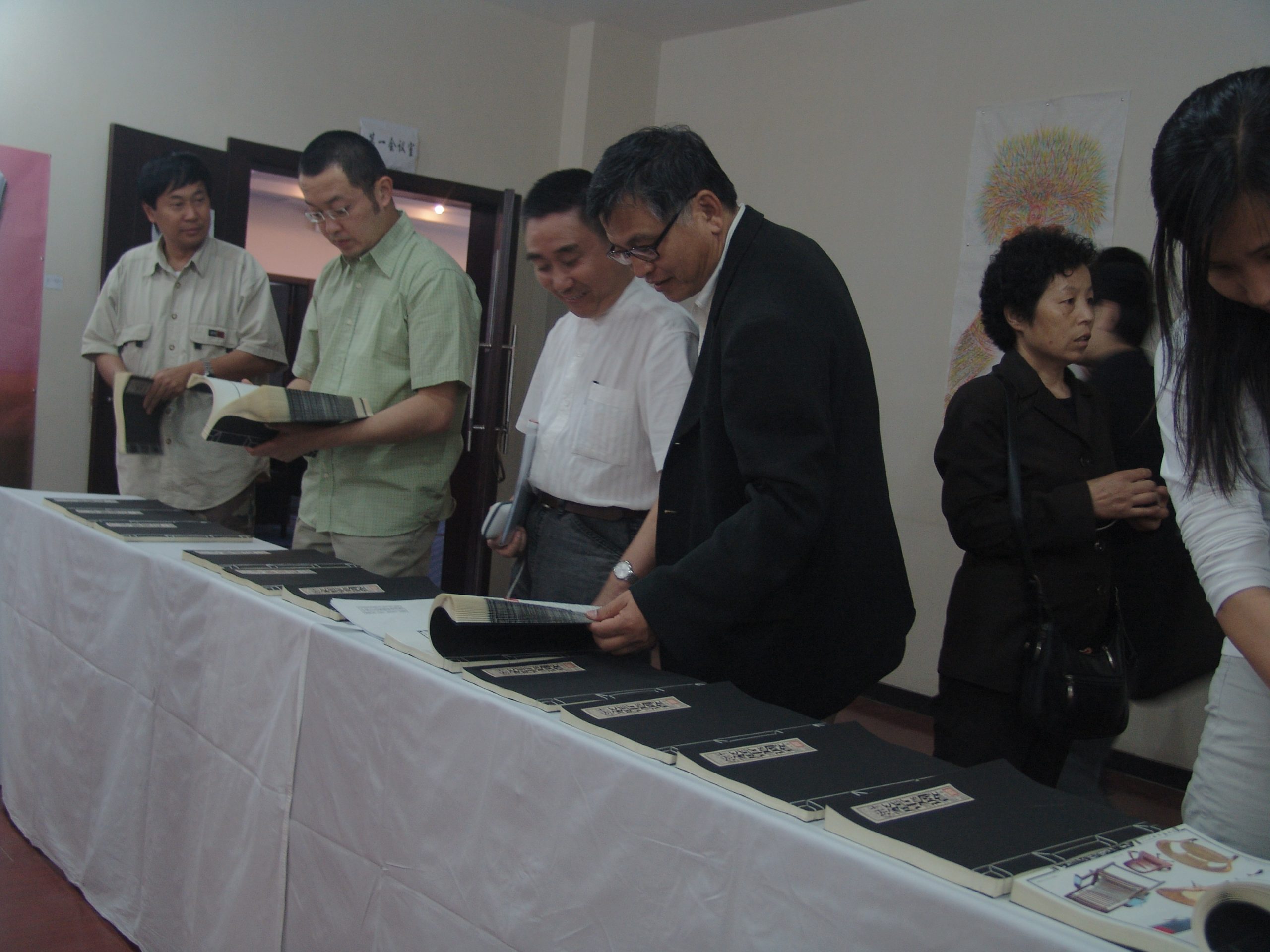 The Experimental Art Department of the Central Academy of Fine Arts ‘Survey on Chinese Public’ Aesthetic Taste’
The Experimental Art Department of the Central Academy of Fine Arts ‘Survey on Chinese Public’ Aesthetic Taste’
In July and August of 2005, the Experimental Art Department of Central Academy of Fine Art carried out this investigation in 11 provinces throughout china.
127 families were surveyed and 127 studies were collected in this project.
The survey was carried by visiting and engaging in the daily lives of Chinese citizens. Through field study methods, the survey sought to investigate the aesthetic value of Chinese families.
The investigation started with the general sociological background on each family, including income, education level, as well as their likes and dislikes of particular images. As such, the investigation tried its best to present in full scale the Chinese people’s understanding of art and sub-culture as well as popular culture of a particular historical period. Through the objective description of methods of cultural preservation used by human kind, the underlying social, regional, environment and cultural background on which it depends were explored.
The work will be presented in textual and archive format at the “Yan’an Forum of Arts Education” in order to providing representatives a specific case study about contemporary art education.
Wei‘s Shadow Puppets Show
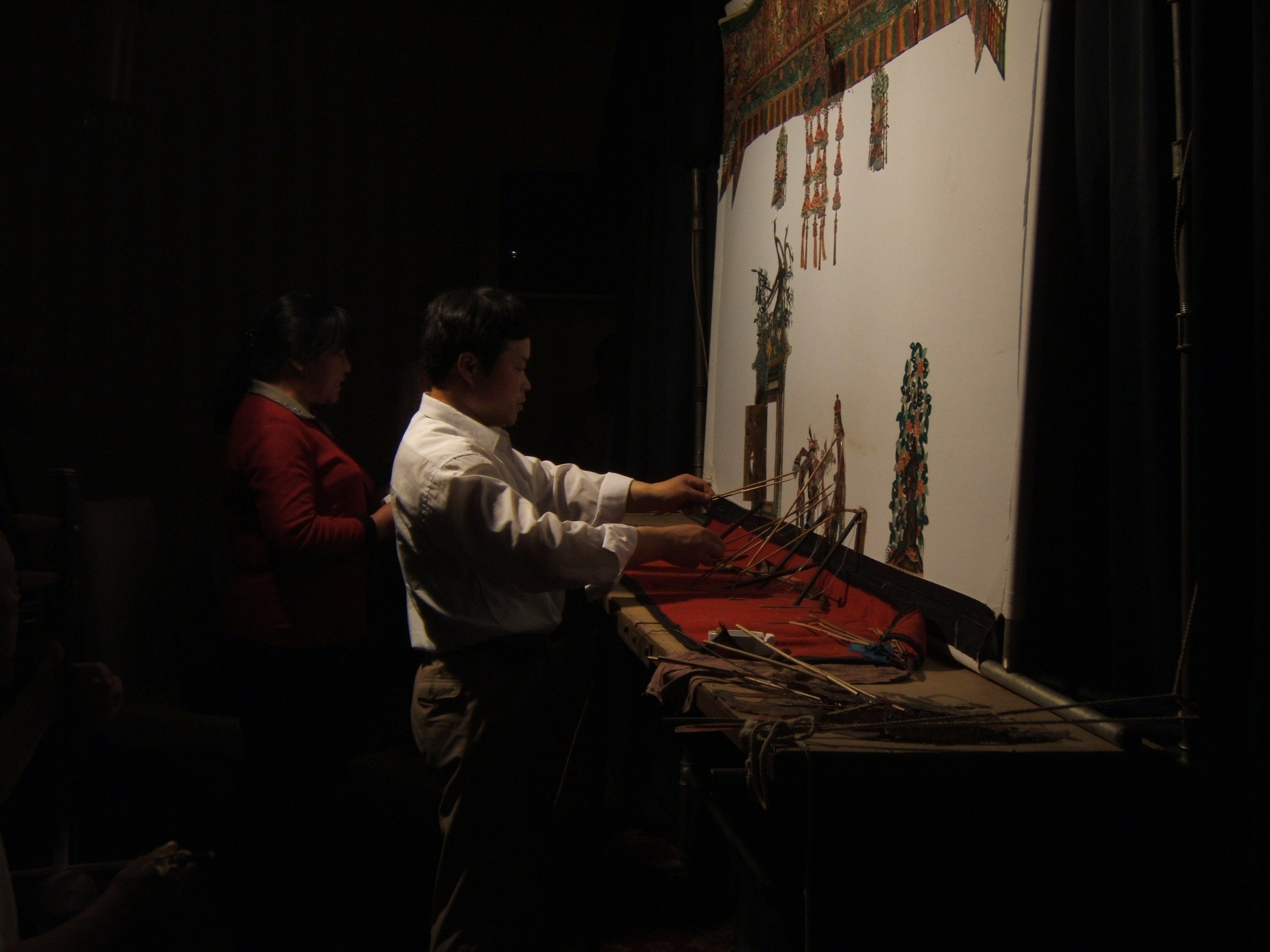
Yan’an Historical Site of Lu Xun Art Academy (Catholic Church)
Five miles northeast of the city of Yan’an in the village of Qiaoergou is a Catholic church and ten cave dwellings. In 1939, the site was converted into the Lu Xun Art Academy, the first communist art academy in China.
The academy played an important role in the history of the revolution and had far-reaching effects on the Chinese modern culture and art, earning it the moniker of a “palace of new culture and art.” A Catholic church sits on the art academy site. Built in 1933 by a Spanish priest, today the church houses the dance department of the Lu Xun Art Academy of the Yan’an University. Within the Catholic church the Long March Yan’an Project held an exhibition of international artists.
Dmitri Gutov
Dmitri Gutov
Torture with Russian Culture
Photographs
2006.5.20
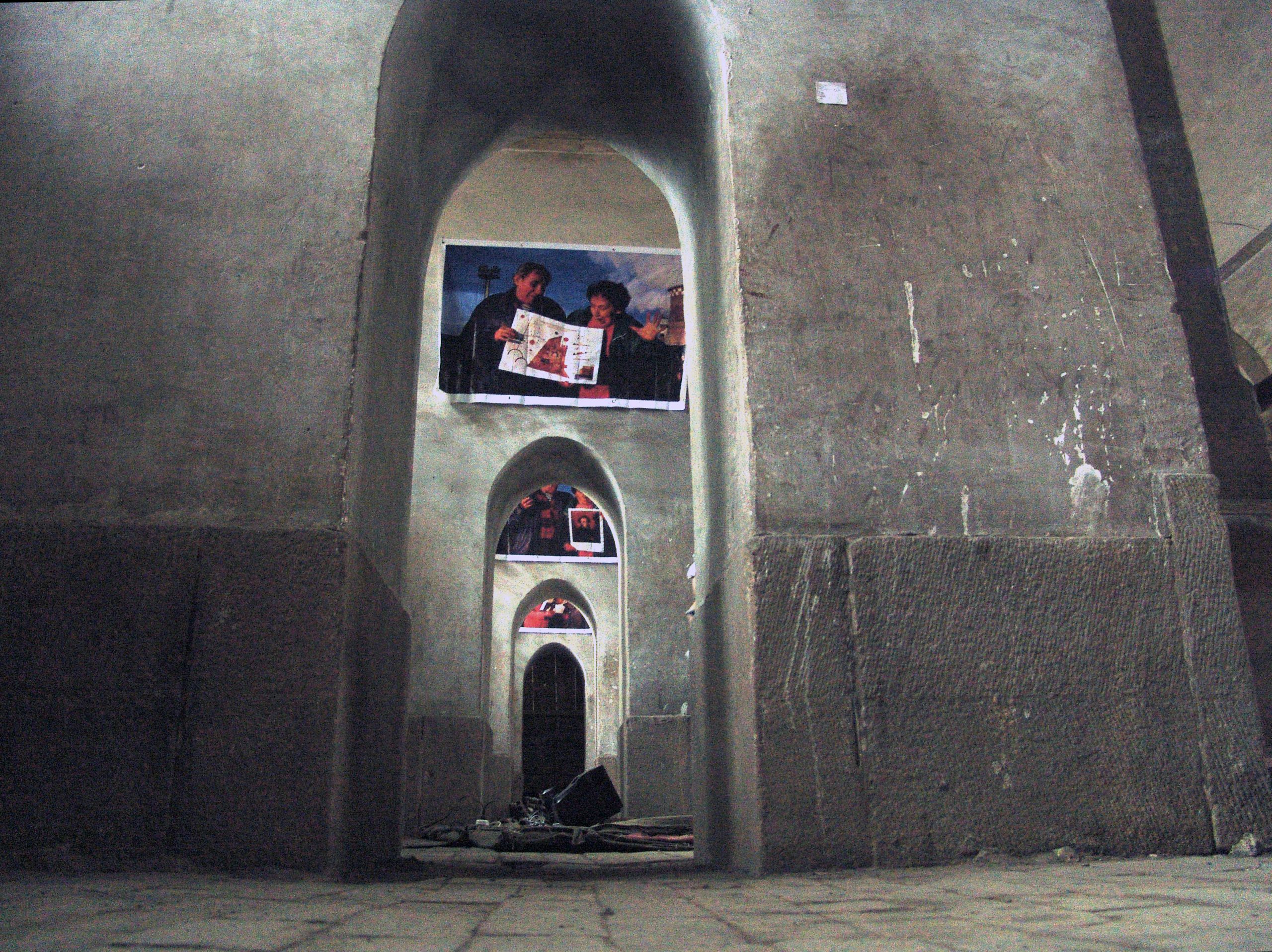
He Jinwei
He Jinwei
Purlieu – Yan’an woodcutting
Woodcut prints and performance
Qiaoergou historic site of Lu Xun Art Academy
2006.5.20
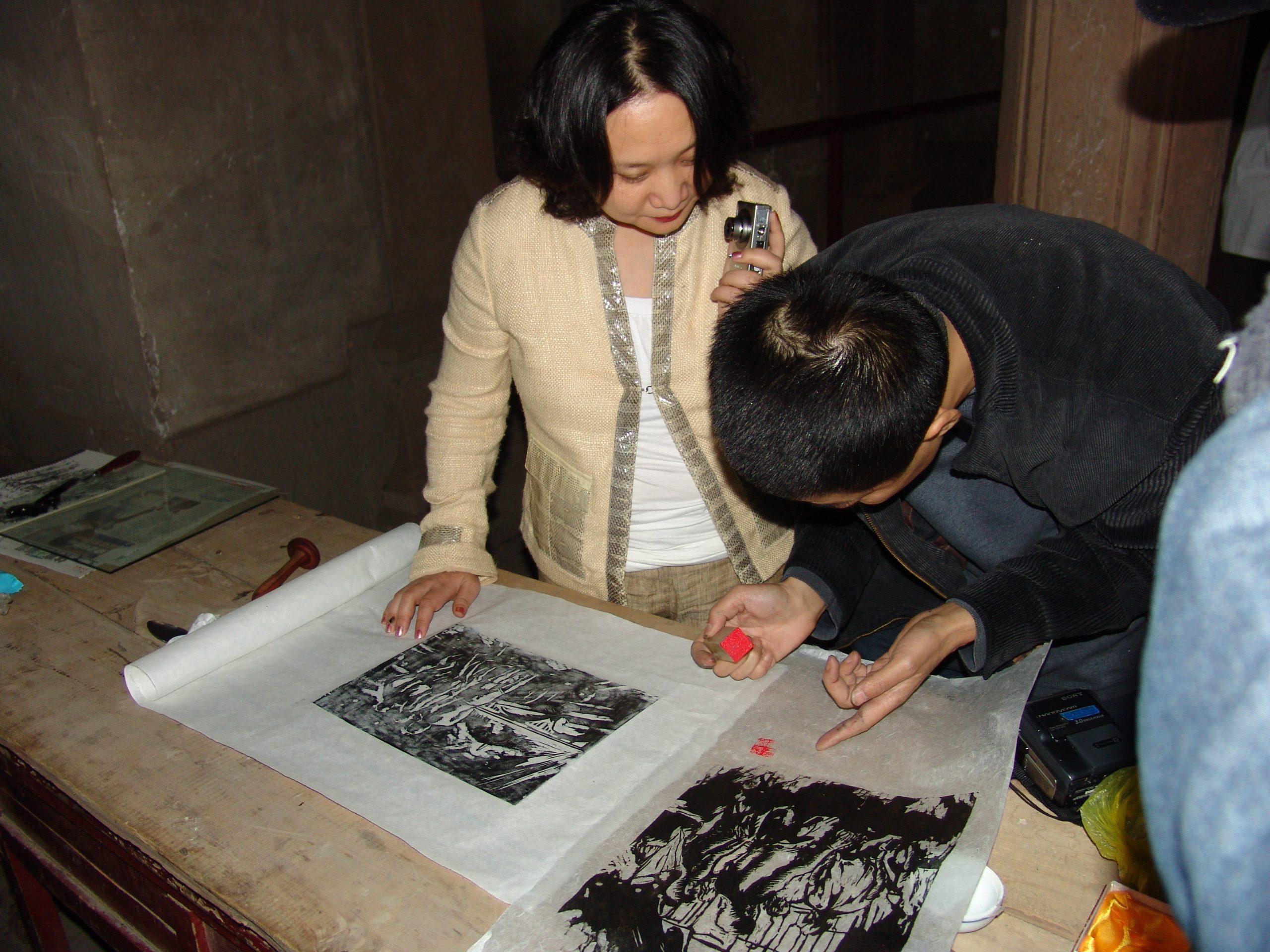
He Jinwei, “Purlieu – Yan’an Woodcutting”, woodcutting prints/performance, 2006
Woodcutting prints has a unique background in Chinese art history. It was first introduced into China from Japan by Lu Xun, a leading figure in the May 4 New cultural movement, and soon became the most popular form of artistic expression for young artists in Shanghai. With the travel of revolutionary youths to Yan’an, this type of artistic form became an important symbol of communist artistic production in Yan’an, becoming a model for “revolutionary” themed works, inspiring numerous generations of people. On May 23, artist He Jinwei, revisited the historical site of the Lu Xun Art Academy in Yan’an, and in the “serve the people” spirit of historical “Yan’an Forum on Arts and Literature”, created woodcutting print works onsite based on contemporary Yan’an landscape. The prints were distributed free of charge to the Yan’an people.
Over the past 2 years, the artist has already traveled the historical route of the Long March. The use of an artistic method is not to superficially continue with the metanarrative memory. Rather, it is to re-understand and interact with the people along the route of the Long March and along the peripheries of society, and through pursuit of historical memory, reconstructing the present. In a time where contemporary art is daily being museums, curators, and art market restricted and tempted, to return to the relations of production of art in a particular historical period is extremely meaningful. To re-present a historical period is not to simply copy its zeitgeist, but rather to a pursuit of historical memory to reconsider the state of contemporary art, and the result of the transition from creation to consumption, and to identify problems and possibilities. Through a historical perspective, unfolding the inherent contradictions facing contemporary art today.
Long March Project
Long March Project
Documentary of Long March Project
Qiaoergou historic site of Lu Xun Art Academy
2006.5.20
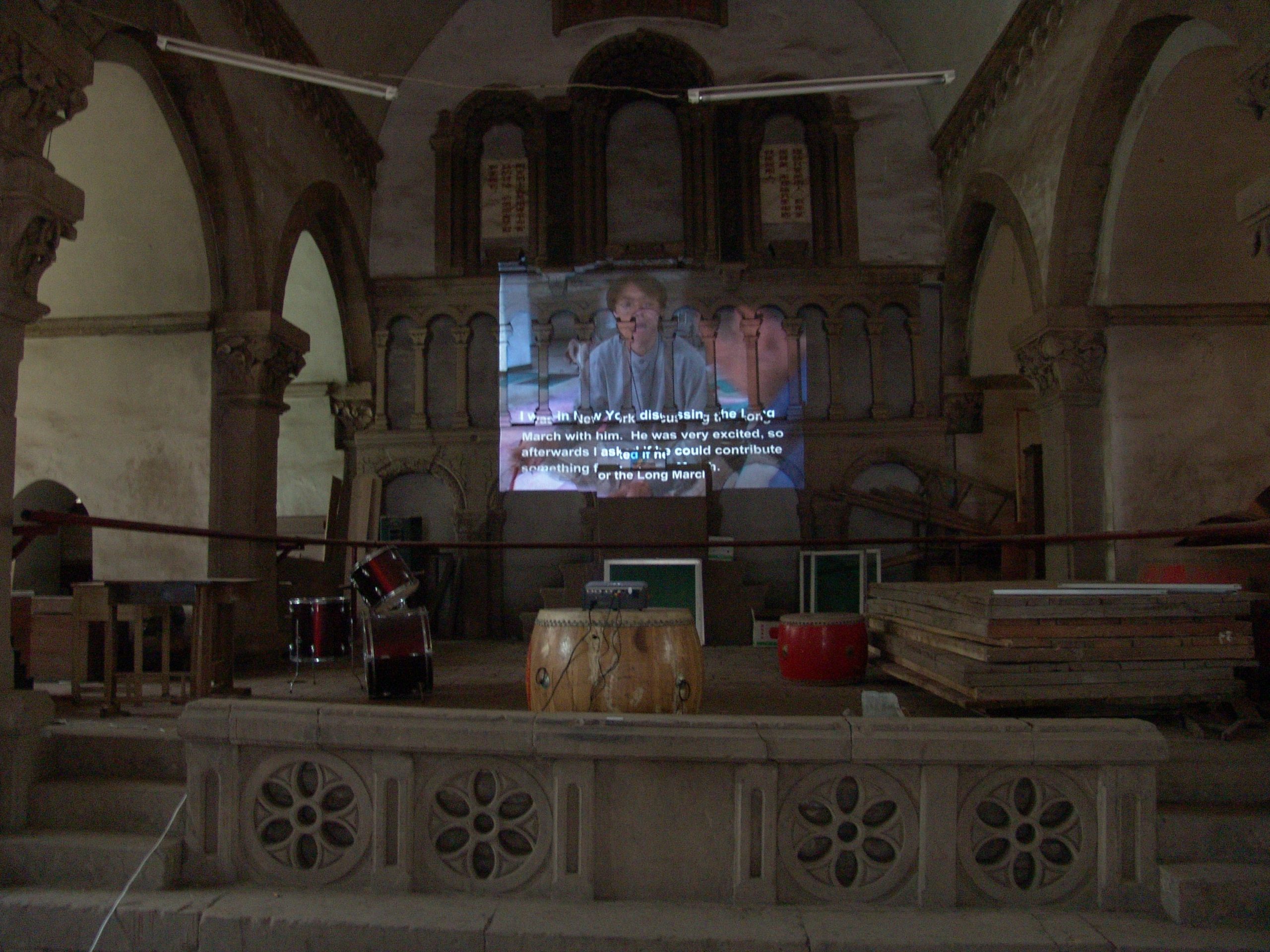
Lu Jie
Lu Jie
No Foreigners Beyond this Point
Embroidered cloth flag, installation
Historic site of Lu Xun Art Academy
2006.5
“No Foreigners Beyond this Point” is a sign which the author has seen often in his travels in China and internationally, using the power of text to set apart and carve out a particular space. What is represented within this area are all contradictions hidden under the symbol of a unified identity. This warning is actually a two way street, much like a revolving door. People are continuously identifying and counter-identifying themselves, ultimately turning into themselves and the “Other” within this revolving space. Most absurd is humankind never wearies of this game, standing in place and stepping across.
This conceptual textual work was displayed in the site of Yan’an University Lu Xun Art Academy, originally a Catholic church built by a Spanish missionary. The work’s appearance in this special context drove people to look into the alternation and repetition between the inside and outside as well as the moving in and moving out in the dynamical change of historical development.
Trinh T. Minh-Ha
Trinh T. Minh-Ha
Shoot for the Contents
2006.5
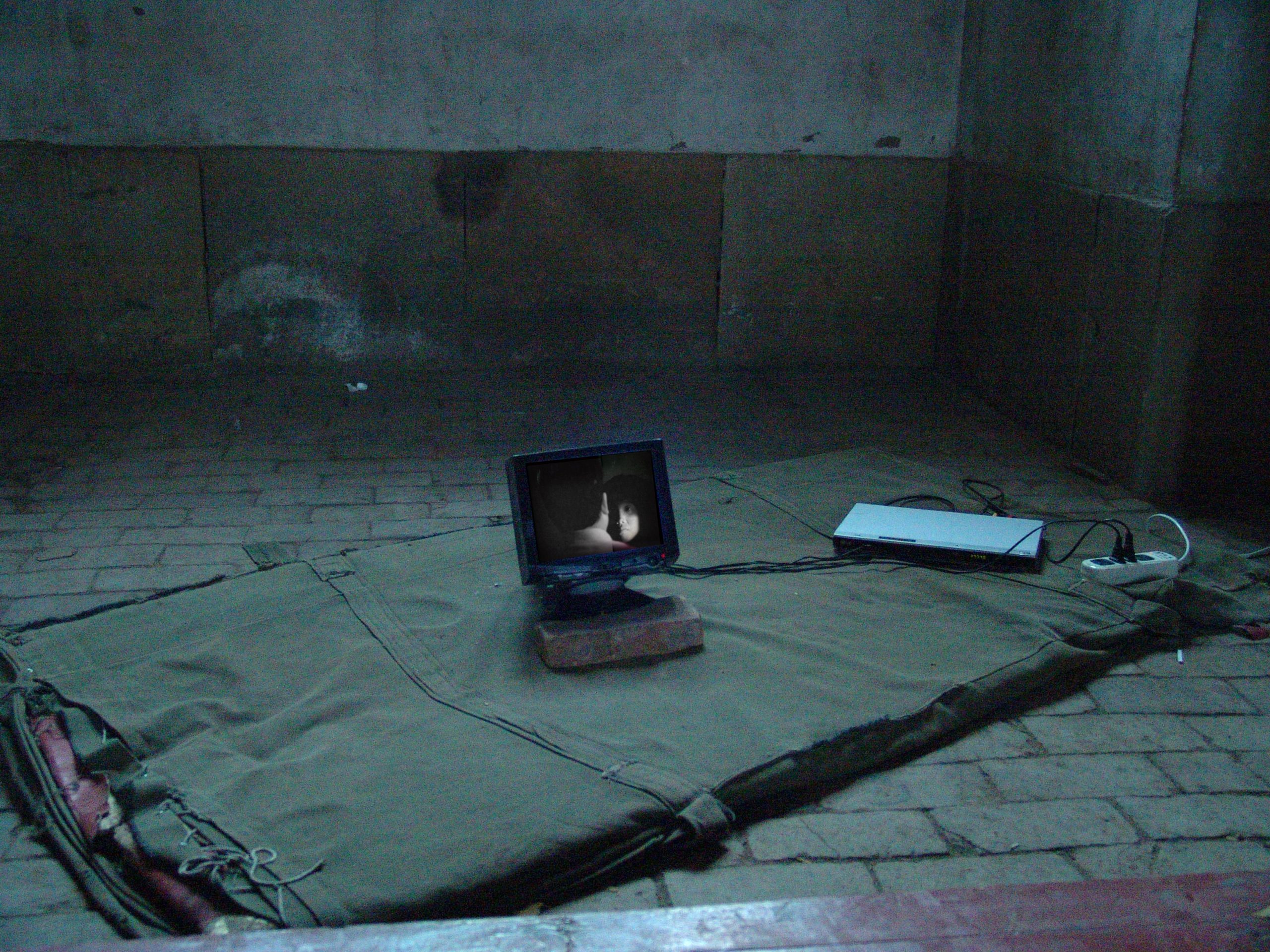
Ulrike Ottinger (Germany)
Ulrike Ottinger (Germany)
China: The Arts, the People
Colour film
2006.5
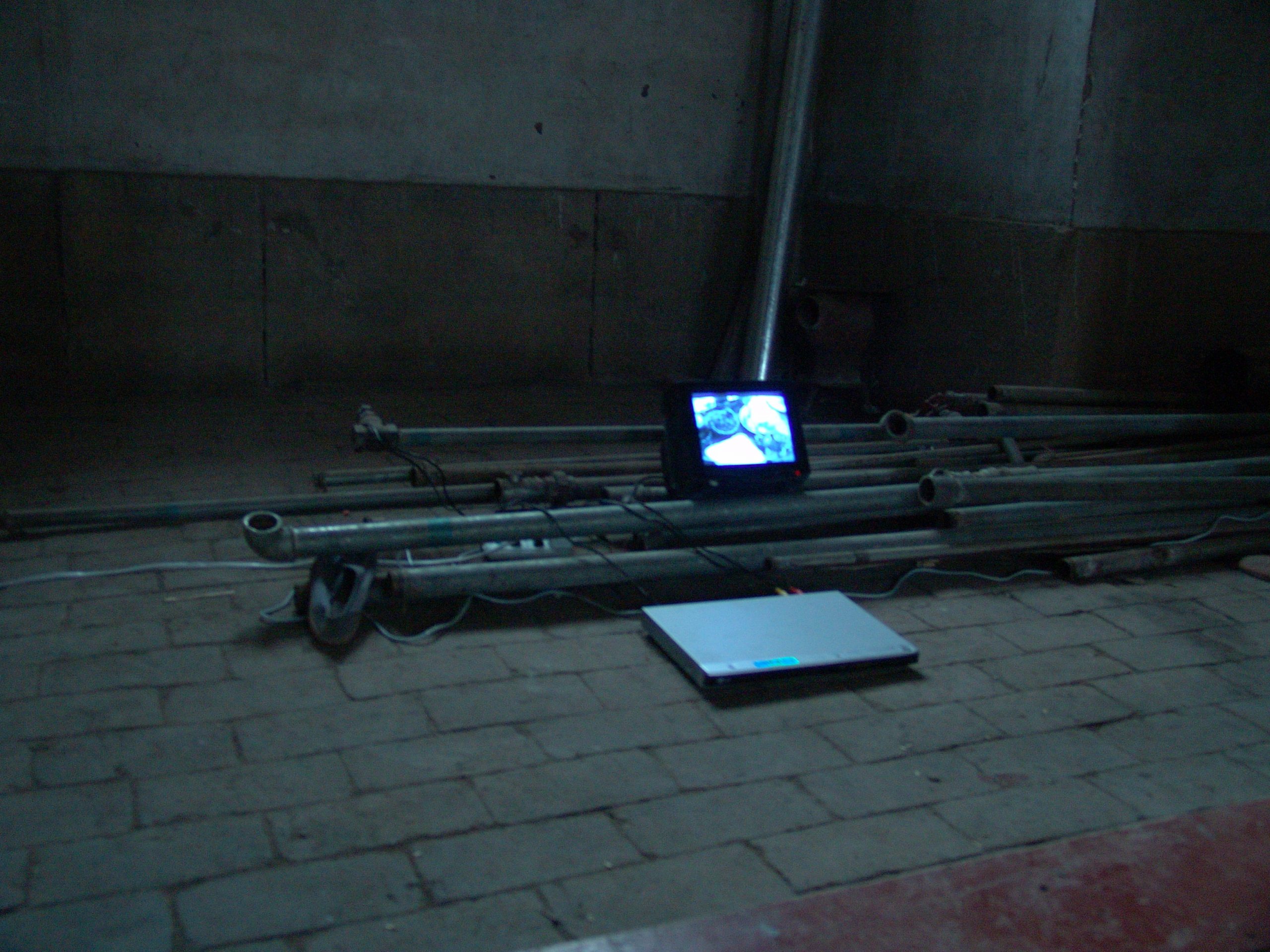
Dan Mills
Dan Mills (USA)
(Miss) Understanding the Long March
Prints
Historic site of Lu Xun Art Academy
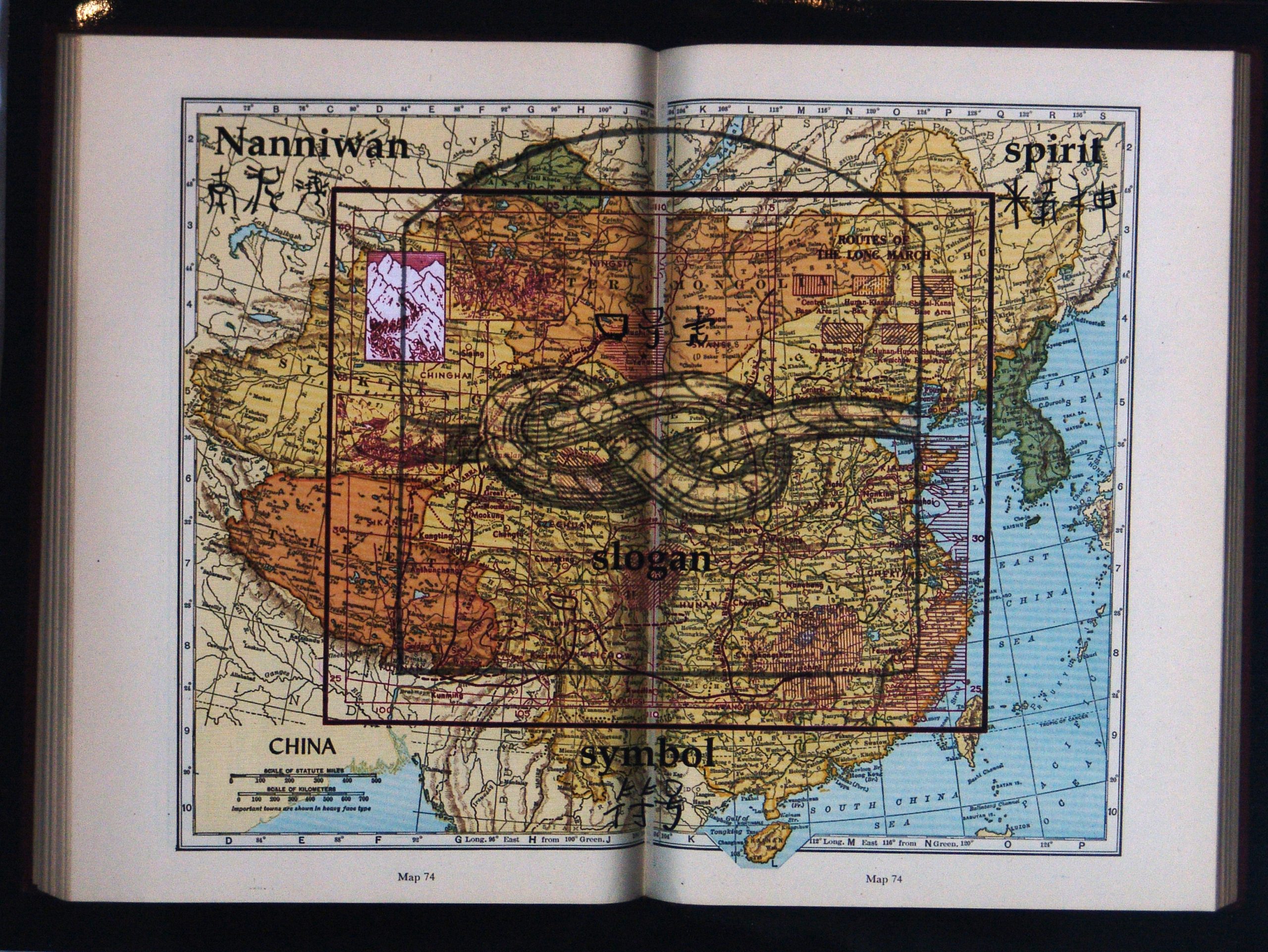
Various Locations in and around Yan'an
Wang Wei
Wang Wei
25000 on an Escalator
2006
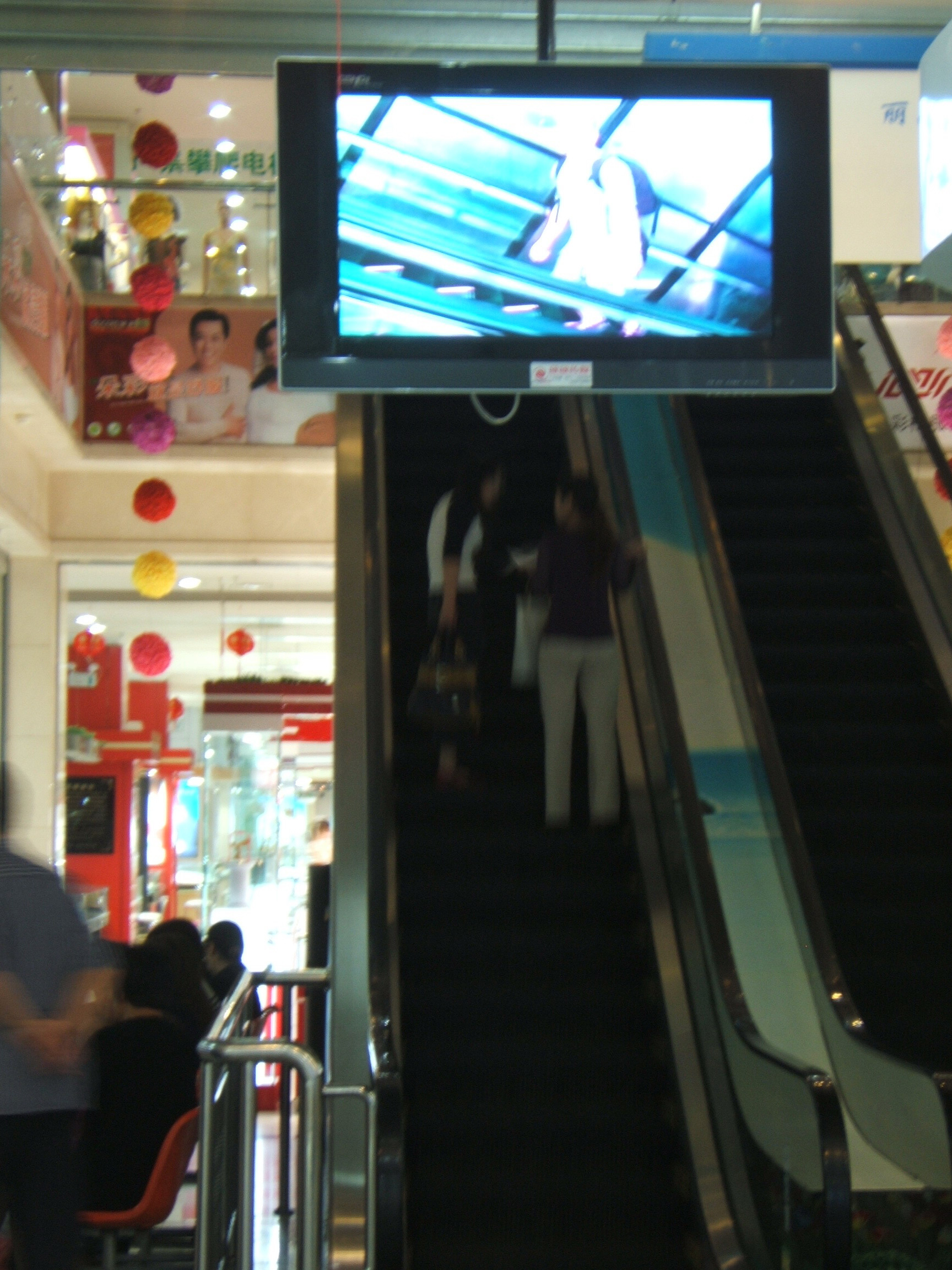 Wang Wei, 25000 on an Escalator, 2006
Wang Wei, 25000 on an Escalator, 2006
Yan’an Lirong Commercial Building is located in the most prosperous part of Yan’an city. The artist Wang Wei showed his video work on the building’s central public television monitors. The work shows two groups of people walking up and down escalators in shopping malls in a big city, with several people walking backwards.
Yin Xiuzhen
Yin Xiuzhen
Long March
2002
 Yin Xiuzhen, Long March, 2002
Yin Xiuzhen, Long March, 2002
The old clothing, photos, postcards, suitcases and other objects collected by the artist at the twenty stops along the Long March – from Ruijin to the final destination of Yan’an – are all imbued with profound personal, collective and circumstantial memories. The documents collected at each stop and the documents and suitcases posted back to Beijing together form the artwork. At some point along the Long March, it will be exhibited.
Song Dong
Song Dong
Ratio 1: 25000
Performance, installation
2006.5.20 – 23
 Song Dong, “Ratio 1:25000”, performance/installation, 2002-2006
Song Dong, “Ratio 1:25000”, performance/installation, 2002-2006
The artist prepared 3 “step recorders” for the Long March team. These were given to the Long March curators and main personnel to track how many steps each one took. The artist traveled separately from the Long March team, also keeping track of the number of his paces.
Based upon the recorded number of paces, the artist will construct a 3 dimensional installation of the ratio 1:25000, for a future Long March project. The work converts the un-visual quantity to a visual solid, finishing the misreading of one event through history documentations and their materialized interpretation.
At 3 o’clock May 21, 2006, artist Shu Yong organized a group of 100 elderly residents from the Yanhe River Art Group “yangge” dancers, as well as 300 students from Yan’an University to form his “bubble group.” On the Yan’an Yanhe River square, the yangge dance group performed, and the students, led by Shu Yong, blew bubbles, a childlike ideal refracted numerous rainbows in the sunshine…
Afterwards, Shu Yong led the group up Baota Mountain, and once more, underneath the Baota Pagoda, the group performed their dance, and tourists also joined the group in blowing bubbles.
Shu Yong’s work has continually been dealing with public art practice, borrowing upon history and myth to new theatrical sites and narratives.
The work uses a visually dazzling method to give form to the power of the collectivist ideal. Through a whimsical form, the work deconstructs the ideal Utopian nation and searches for the location of power for collectivism. Setting out from reality, the artist reconsiders history, culture and region, providing both a positive and realistic alternative.
Qiu Zhijie
Qiu Zhijie
It’s Changed
Performance, photography
Yan’an Yanhe River
2006.5.21
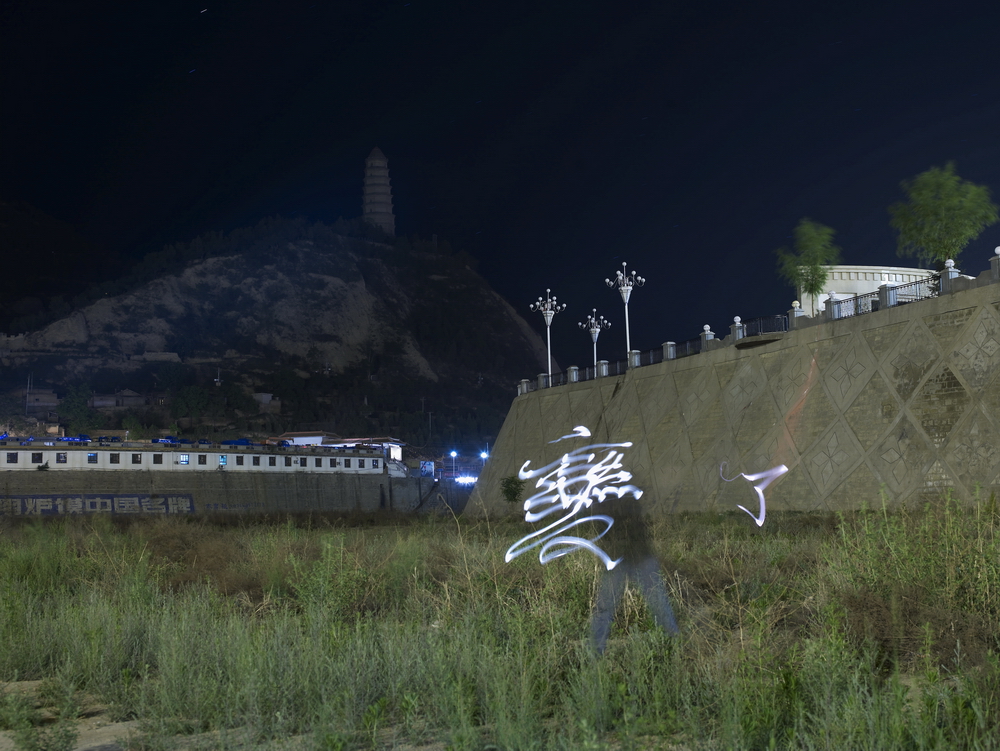
On the night of May 21, 2006, artist Qiu Zhijie completed this work at the foot of Baota Mountain in Yan’an. In continuation of his series of works in which he records his writing in light through photography, he carefully selected the background and wrote the 2 Chinese characters for “change”. The work records two traces of things past, one a fleeting flash a light, and the other the Baota Mountain onto one plane. Through this relationship of space and time, the work combined historical memory and the present.
Shu Yong
Shu Yong
Bubbles at Baota Mountain
Performance, photography
Yanhe Square, Baota Mountain
2006.5.21
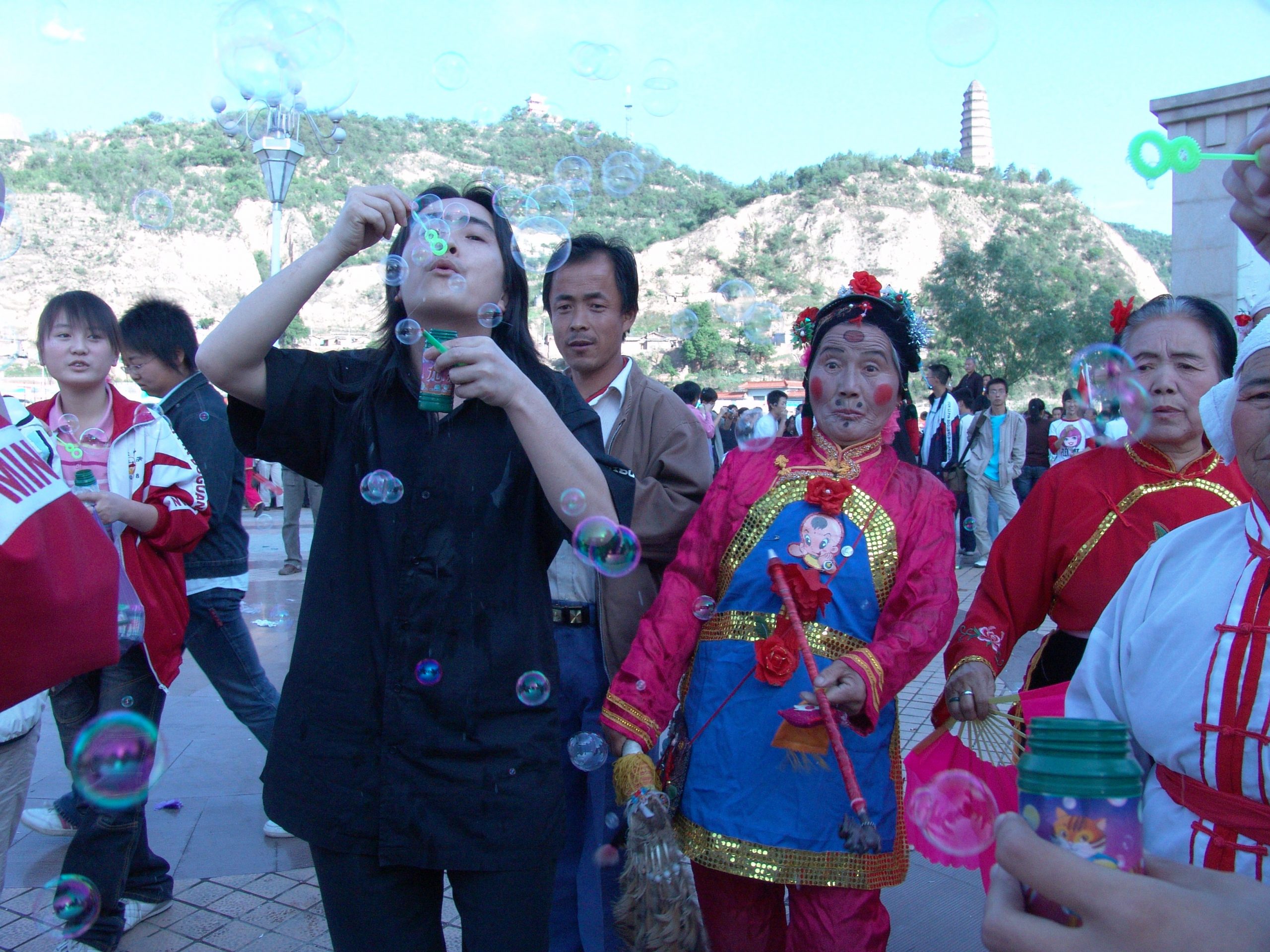
At 3 o’clock May 21, 2006, artist Shu Yong organized a group of 100 elderly residents from the Yanhe River Art Group “yangge” dancers, as well as 300 students from Yan’an University to form his “bubble group.” On the Yan’an Yanhe River square, the yangge dance group performed, and the students, led by Shu Yong, blew bubbles, a childlike ideal refracted numerous rainbows in the sunshine…
Afterwards, Shu Yong led the group up Baota Mountain, and once more, underneath the Baota Pagoda, the group performed their dance, and tourists also joined the group in blowing bubbles.
Shu Yong’s work has continually been dealing with public art practice, borrowing upon history and myth to new theatrical sites and narratives.
The work uses a visually dazzling method to give form to the power of the collectivist ideal. Through a whimsical form, the work deconstructs the ideal Utopian nation and searches for the location of power for collectivism. Setting out from reality, the artist reconsiders history, culture and region, providing both a positive and realistic alternative.
Yan Lei
Yan Lei
Fifth System
Installation
Shenzhen to Beijing Long March Space C
2007
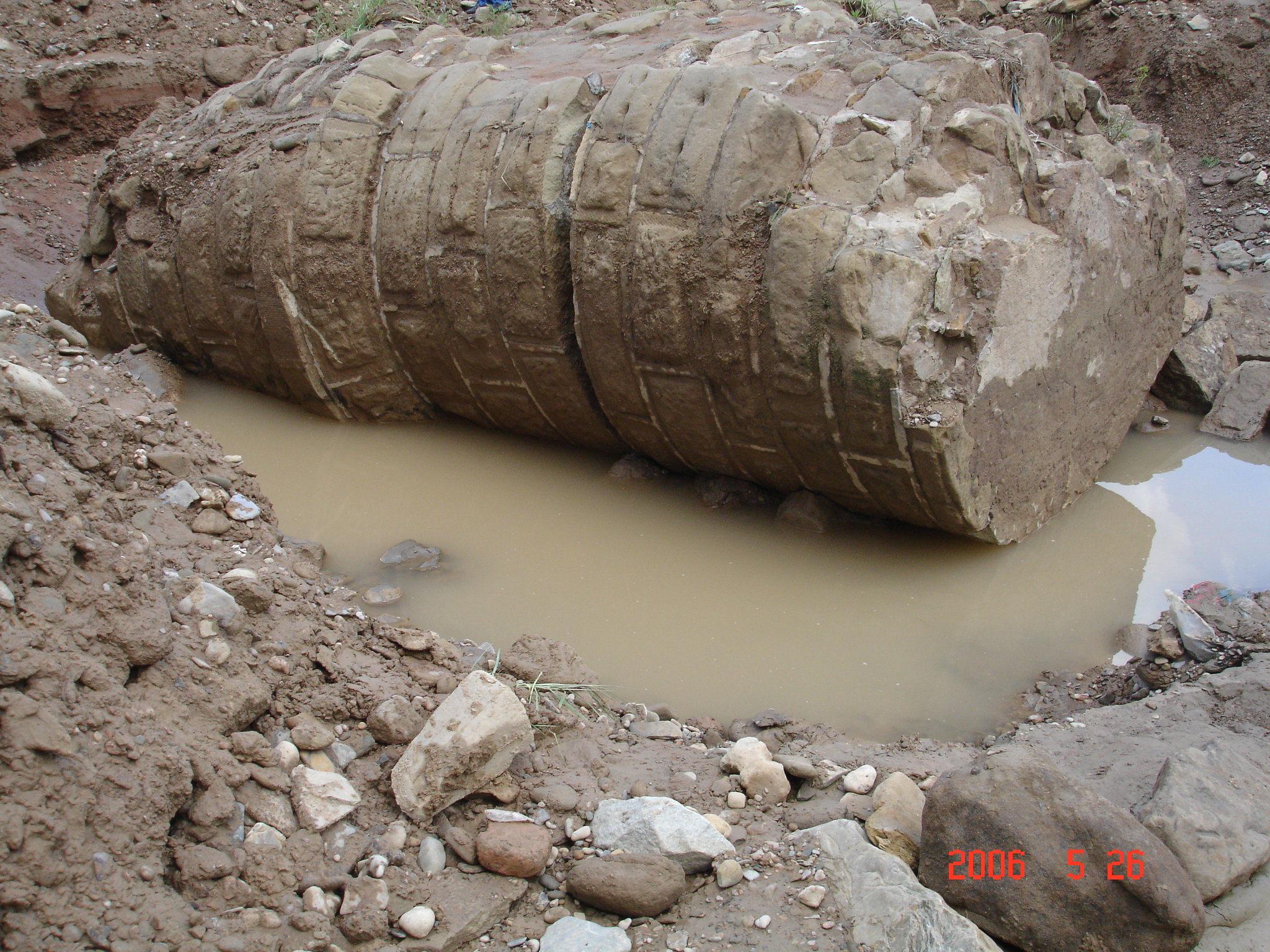
The Luojiaping Village in Yan’an lies in the lower reaches of Yanhe River. A 200 meter stone bridge functions as a vital artery between Lujiaping and the city of Yan’an. Before the revolution, an old stone bridge stood in its place, but fell into disrepair and was eventually abandoned and destroyed. Today, a new bridge stands in its place. Nearly choked by sand, the former bridge bases are the only remnants of this old bridge’s memory. Yan Lei proposed to transport the base of this old bridge to Beijing and exhibit it in the Long March Space.
Do objects have memory in themselves? Can they express and tell their own stories? Having lost its original function, does the object still retain its meaning, or is it purely a symbol? The process of movement itself is not the entirety of the work; rather, it is the material power of object which has endowed the work with meaning.
The work converts an object’s functional utility, and pushes it to the very core of the inherent power of objects to express itself. The elements that comprise this core are history, culture as well as geography, time, and space.
Jiang Jie
Jiang Jie
Sending off the Red Army – In Commemoration to the Mothers on the Long March
Sculpture, performance
Yan’an Los Angeles Nusery School
2006.5.21
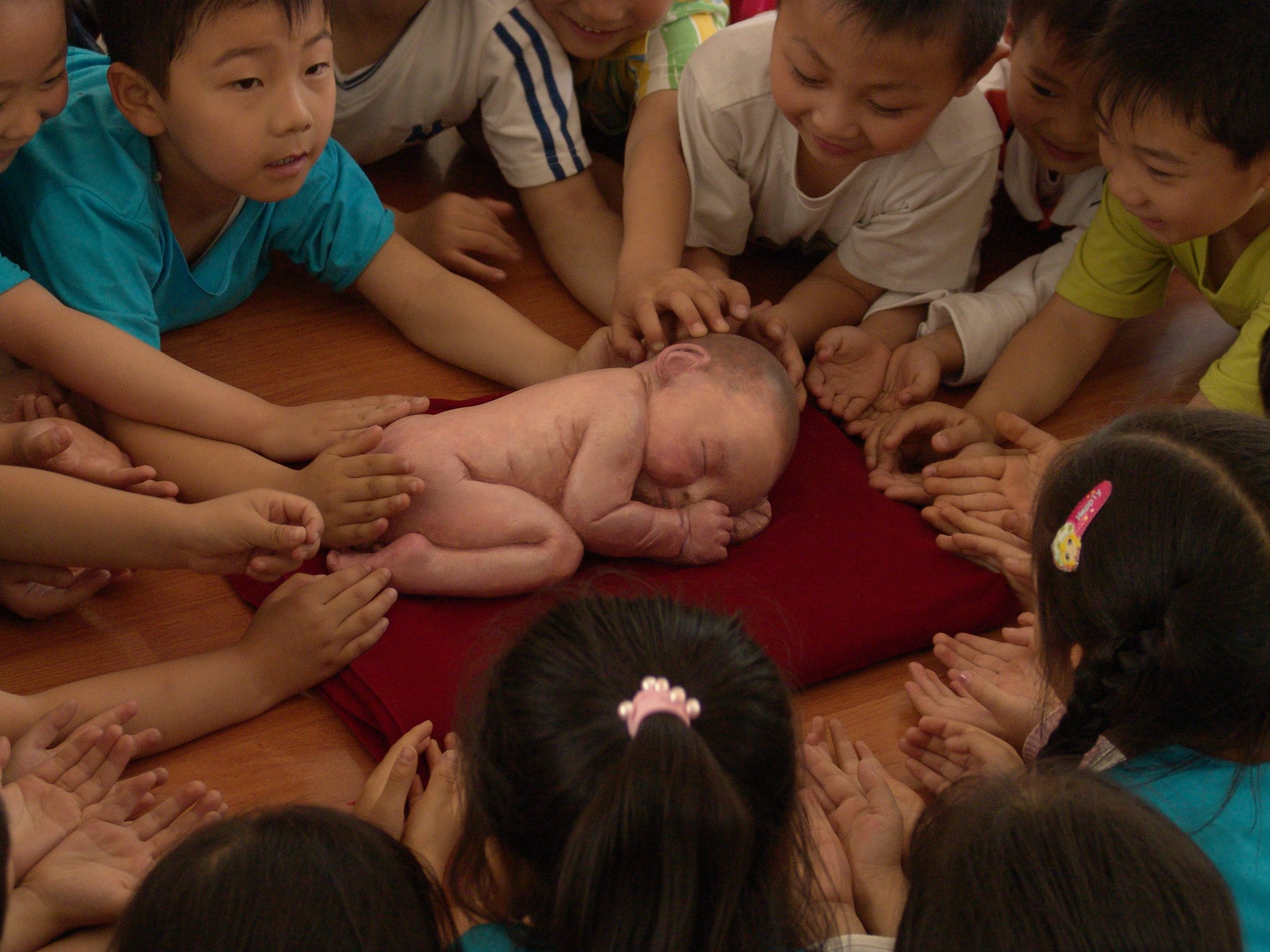 Jiang Jie, “Sending off the Red Army— In Commemoration to the Mother’s on the Long March”, sculpture/performance, 2002 – ongoing
Jiang Jie, “Sending off the Red Army— In Commemoration to the Mother’s on the Long March”, sculpture/performance, 2002 – ongoing
Initiated in 2002 as part of the “Long March – A Walking Visual Display”, the work has continued to be realized in China and abroad. The artist created a series of fiberglass babies, which symbolically functioned the newborns which the mother’s along the historical Long March were unable to raise themselves due to the hardships on the road. The sculpture “baby” will be adopted and given a name by the local people. Every year, the adoptee and family will take a family portrait with the baby on the baby’s birthday (adoption date)….
In 2002, one of the baby sculptures was adopted by the family of Xiao Hongang who works at ‘the museum of glacier’ in Moxi of Si Chuan province. The family very much wanted to have a girl, so they named the baby Shen Xiaoshu. Every August 26, they mail a photograph of the family with the baby.
The “Los Angeles Nursery” was established in 1941. It was originally know as the “Central Nursery”. Mao Zedong sent his daughter Li Min to this nursery as the first student, and the nursery soon became a cradle for the children of the Communist Revolutionaries. Shortly thereafter, Song Qinling launched a donation drive among the overseas Chinese in Los Angeles, who contributed large sums of money, and other items to the Yan’an Central Nursery. In memory of the patriotism of the overseas Chinese, the Central Nursery changed its name to ‘Los Angeles nursery’ under the permission of Central Communist Party. Since the revolution, a large number of Central Party officials attended this nursery.
In May 2006, one of Jiang Jie’s babies was adopted by the nursery, and named Luo Anbao by the nursery’s principal. The name is composed of the words “Luo” (from the Chinese of Los Angeles), “an” (from Yan’an), and “bao” from the word “bao bei” which translates as “little darling”. In addition, the nursery also held a welcoming ceremony for the “baby” on the adoption date. Every May 22, artist Jiang Jie will receive a photography of Luo Anbao with the children from the nursery.
The work recalls a brutal historic memory through the baby’s adoption and intercommunication between the artist and the adopter. The work also represents a historical from a special view of female, providing it with a unique understanding of memory.
Chen Shaofeng
Xintianyu A Cross-Sectional Image of People
Performance and Painting
Yulin, Mizi, Guixian and other areas throughout Yan’an
2006.5
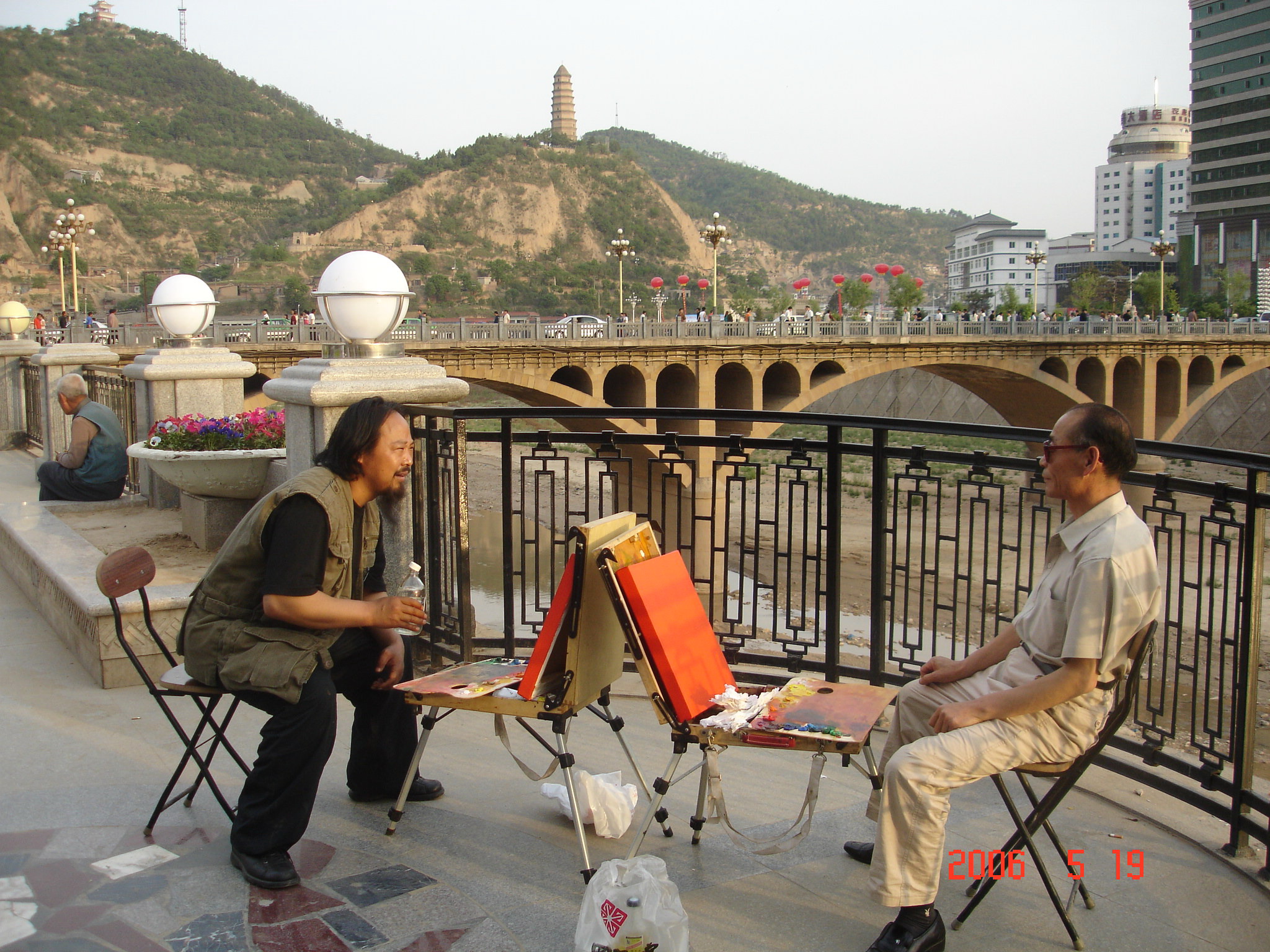
Born along the Yellow River Plateau, artist Chen Shaofeng has a strong personal connection and understanding of the history and culture of the region known as “Sha’anbei” (northeastern Sha’anxi Province). Over a six month period in 2006, the artist intends complete a set of works in which he paints residents of Sha’anbei as they paint him. The image is an important means of cultural preservation for humankind, and an innate urge and inalienable right of expression. However, with professionalism and division of labor, the general public has become deprived of the right to use this natural form of expression, and have instead languishing in silence for many years. Through encouraging people to draw him, the artist subverts the relationship between professional and folk, restoring the expressive power to the public realm. In this process of mutually expressing one another through drawing and being drawn, the essence of art is restored. This is not just a technique, but rather a consideration of art and its relationship to its surrounding.
“Xintianyou” is a folk melody from Sha’anbei region. The singer creates unique lyrics dependent upon the appropriate subject matter for a given situation. Likewise, Chen Shaofeng’s project does not have a predetermined subject which he will paint. Rather, he selects a subject from the people he meets along the route of the Long March in Sha’anbei. For example, the first subject that the artist painted was a 76 year old former soldier from the 359 division of the 8 route army. In order to obtain this gentleman’s agreement, the artist had to temporarily set up his studio in the old man’s home, and bring him gifts, sing folk songs with him, burn incense together, as well as invite the old man to Beijing this winter. Chen Shaofeng believes that this is art. The final result of the painting is unimportant. The key is the relationship created and the process of communication. This is art returning to the people. Everyone is an artist possessing the right and ability to visually express a subject that they understand and are familiar with. This type of “art for the people” is not about fulfilling a doctrine; rather it is about an artist’s communication with the people to express a new artistic and work method.
Luchezar Bodayvich
